Samsung Q80D is a very versatile television. It is certainly a device that can easily adapt to the needs of both gamers and those looking for equipment for everyday viewing. When it comes to the former – that is, gamers – the support for HDMI 2.1, 120 Hz refresh rate, and low input lag make playing on a console or PC pure pleasure. Additionally, the Game Bar feature allows quick changes to settings without the hassle of leaving the game – a small thing, but it makes a difference. It's also worth mentioning the fantastic feature of an efficiently working motion smoother that operates well in games. We get the impression that playing on such a television adds us a few FPS, which translates to an advantage in the game. During everyday use, the Q80D also performs very well. The Tizen system offers access to popular applications like Netflix, Prime Video, and Disney+, so nothing is lacking here. The high brightness of the screen ensures that the television performs excellently even in well-lit rooms. A nice and interesting addition is the solar remote, which not only does not require battery replacement but also allows you to control other devices (e.g., set-top boxes, consoles, soundbars). When it comes to picture quality, the Q80D has a lot to offer. Although it lacks Dolby Vision support, after calibration, the colours look great, and the contrast and black level thanks to FALD (full-array local dimming) have made a huge impression on us, especially considering the television segment. With a VA panel enhanced with quantum dots (QLED), the colours on the Q80D can look truly splendid. Watching movies or series in the evening is a real pleasure – particularly if we care about good detail. However, there are little things that might be bothersome. The lack of a recording feature is certainly a limitation, although it may not be a problem for everyone. Another obvious issue will be its viewing angles. These are typical results for this type of panel, so one must reckon that at the expense of great blacks, the Q80D simply performs average when viewed from the side. Nevertheless, Samsung Q80D is an excellent television that works well in any situation. It offers outstanding picture quality, many useful features, and solid build quality for its price range. A few minor shortcomings do not take away from its charm, as overall it is a model that will comfortably meet the expectations of most users – both those who game on a console and those who simply enjoy evening screenings with good image quality.
- Matching (Score)
- Our verdict
- TV appearance
- Where to buy
- Contrast and black detail
- HDR effect quality
- Factory color reproduction
- Color reproduction after calibration
- Smoothness of tonal transitions
- Image scaling and smoothness of tonal transitions
- Blur and motion smoothness
- Console compatibility and gaming features
- Input lag
- Compatibility with PC
- Viewing angles
- TV efficiency during daytime
- Details about the matrix
- TV features
- Apps
- Playing files from USB
- Sound
Samsung QLED Q80D vs Hisense U7Q
Direct compare
Q80D
U7Q / U78Q

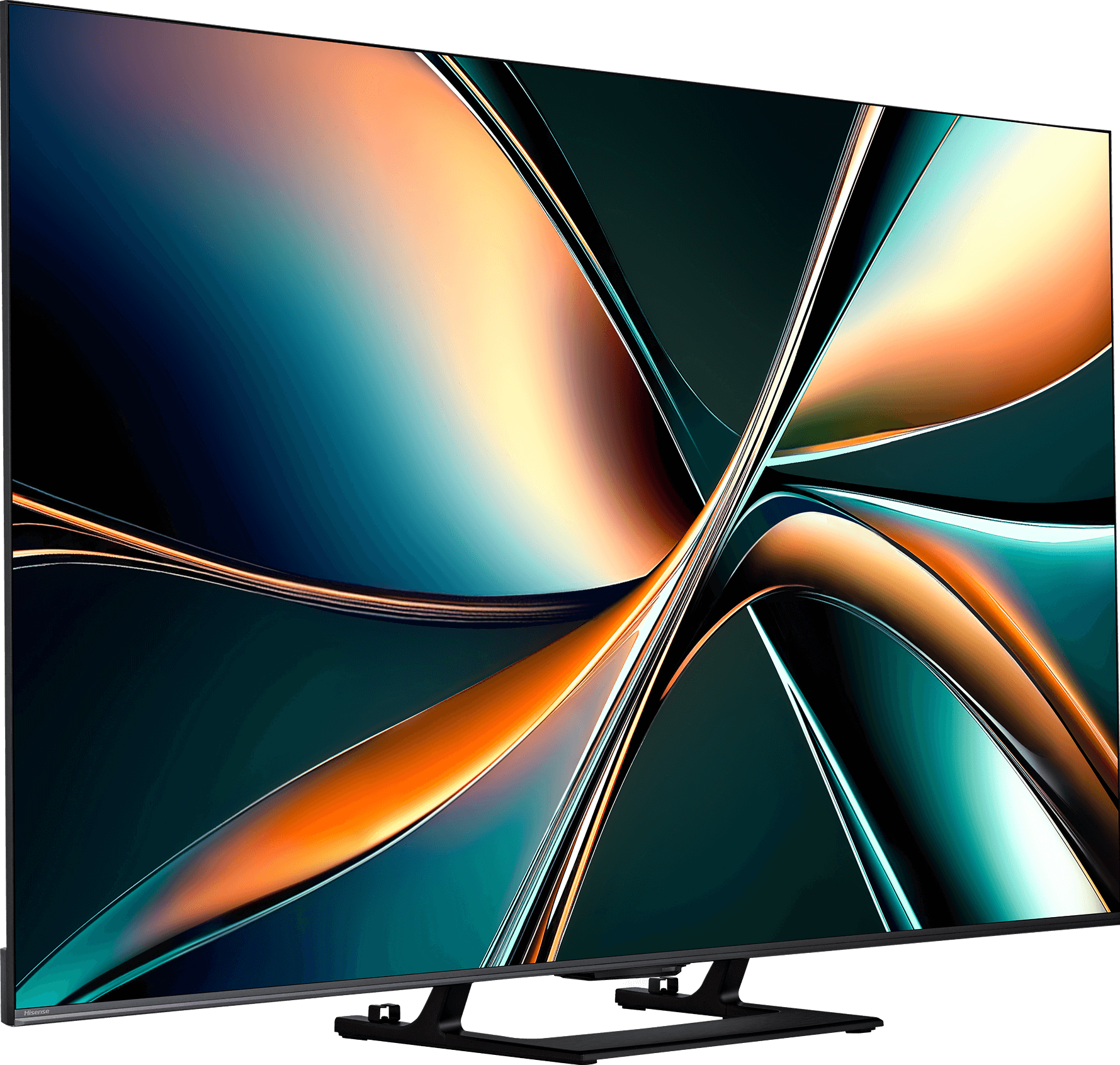
Panel type: LCD VA
Resolution: 3840x2160
System: Tizen
Model year: 2024
Complete the survey to find out the result

Panel type: LCD VA
Resolution: 3840x2160
System: VIDAA
Model year: 2025
Complete the survey to find out the result

Overall rating
7.1
7.2
Movies and series in UHD quality
6.8
6.7
Classic TV, YouTube
6.7
6.8
Sports broadcasts (TV and apps)
6.6
6.5
Gaming on console
8.7
8.0
TV as a computer monitor
7.6
8.6
Watching in bright light
6.0
6.2
Utility functions
7.7
8.9
Apps
8.7
7.7
Sound quality
6.6
7.2
Complete the survey to find out what fits your preferences
Advantages
Great choice for gamers - lots of features, low input lag, 120Hz
High brightness of the panel - good performance during the day
Good black levels and contrast - VA panel with local dimming
Excellent tonal transitions
Advanced smart system "Tizen"
Pleasant sound from the built-in speakers
Great contrast and deep blacks
Very good fluidity of tonal transitions (close to reference level)
High brightness
Support for 4K 144 Hz and even 240 Hz in Full HD
VRR, ALLM, G-SYNC – a complete package for gamers
Low input lag
Pleasant sound with light bass
Many classic TV features built into the VIDAA system
Disadvantages
Average viewing angles
No recording function
No DTS (may hinder connection to home cinema)
No support for HGiG (makes setting HDR on consoles difficult)
Brightness management issues
Poor viewing angles – typical for VA panels
Closed VIDAA system – lack of certain applications
Our verdict
The Hisense U7Q is one of the most interesting Mini-LED televisions in its price segment, clearly demonstrating that Hisense is beginning to make a mark in the market not only through its price-to-performance ratio but also due to its increasingly refined picture quality. Let's start with what truly impresses: the contrast and black levels are at a level that not long ago was unattainable in this price range. Combined with smooth tonal transitions, solid brightness, and a fast 144 Hz panel, the U7Q becomes a television that excels in both movies and gaming. Gamers will find almost everything they could expect here – variable refresh rate (VRR) support, automatic low latency mode (ALLM), very low input lag, and even 240 Hz in Full HD. All of this makes the U7Q compatible with both next-gen consoles and PCs. However, there are some weaker points. With HDR content, one might say: "untapped potential" – you might ask why? The television, due to its algorithms, dims small bright elements or over-emphasises them, which can ruin the viewing experience. There is also a lack of support for HGiG, a feature that would allow for better calibration of the console with the television regarding HDR. In summary, briefly – the Hisense U7Q is a very versatile and complete television that has its imperfections but makes up for them in many key aspects. For gamers, for the occasional movie viewer, for someone looking for good equipment for everyday use – it is one of the most cost-effective offerings in 2025. You just need to know what compromises you are signing up for – and then it will be hard to be disappointed.
TV appearance





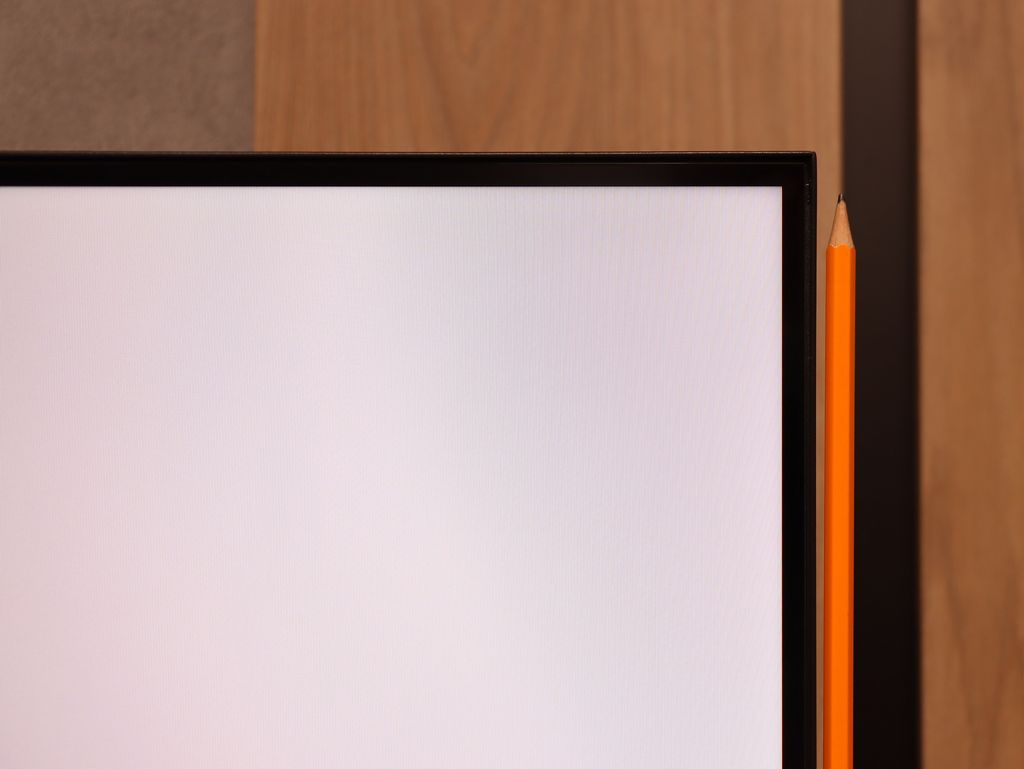
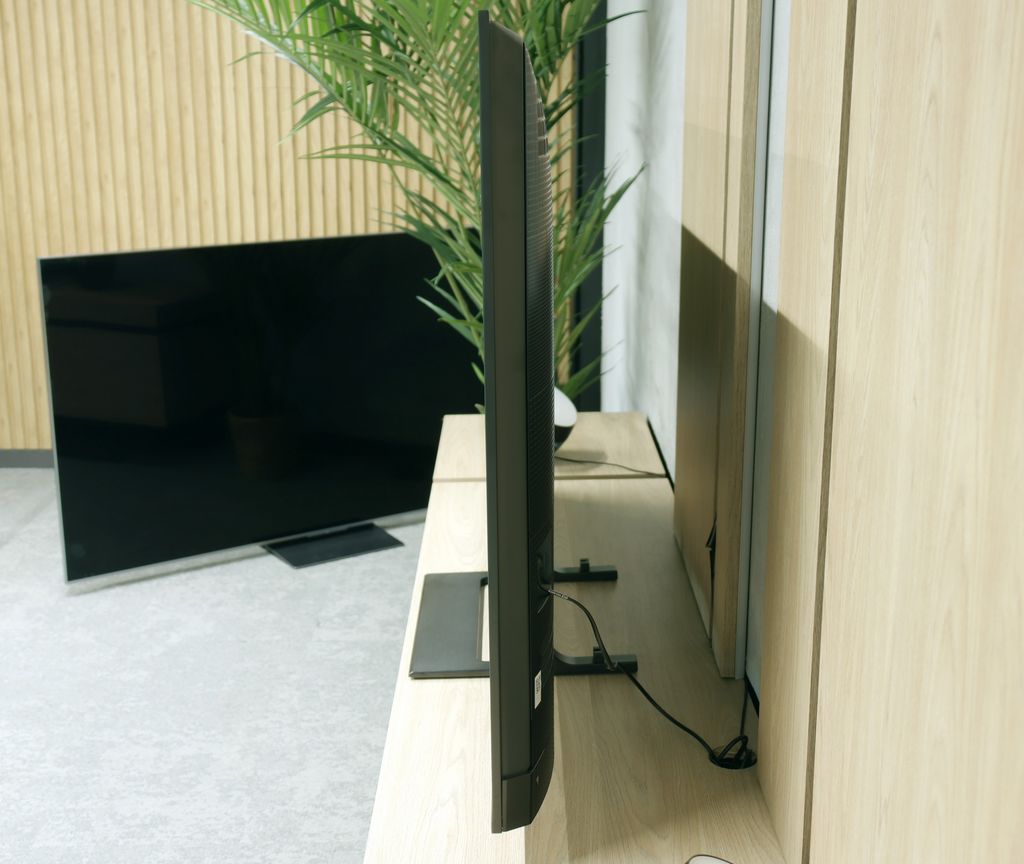
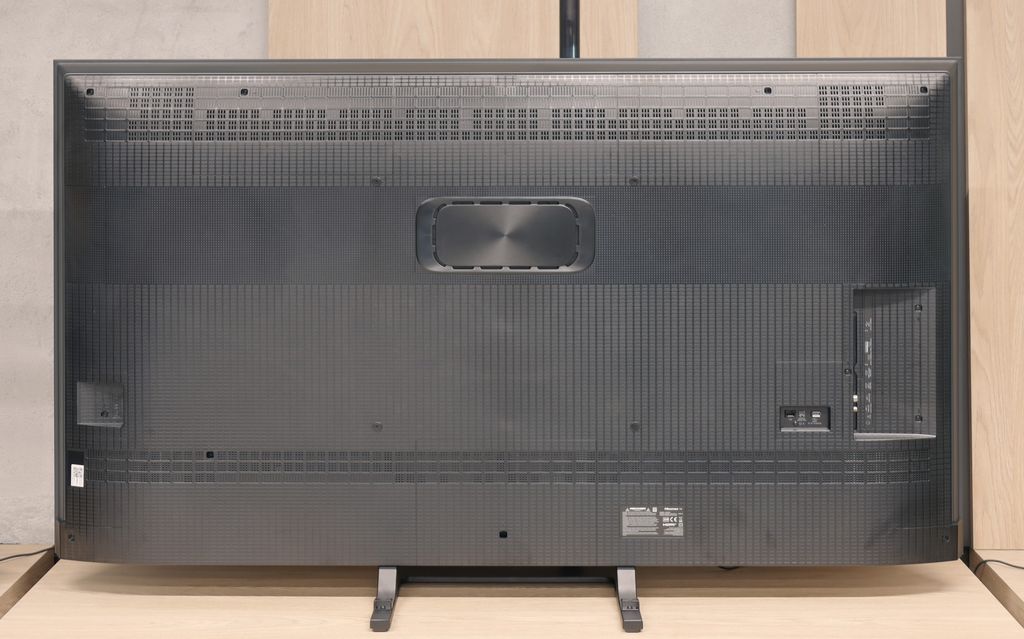
Contrast and black detail
6.7/10
7.5/10
Local dimming function: Yes, number of zones: 100 (10 x 10)
Local dimming function: Yes, number of zones: 220 (10 x 22)
Contrast:

Result
37,350:1

Result
8,850:1

Result
20,350:1

Result
4,300:1

Result
3,800:1

Result
278,000:1

Result
28,800:1

Result
11,100:1

Result
10,800:1

Result
6,250:1
Halo effect and black detail visibility:


The Samsung Q80D television is equipped with a VA panel, which immediately affects the difference in contrast and black reproduction compared to IPS panels. VA panels offer significantly better contrast and deeper blacks, while IPS panels feature better viewing angles but worse contrast. In the case of the 55" model, the television has 100 local dimming zones, and it's worth noting that this number may vary depending on the screen size. Thanks to local dimming, blacks appear well, but it's important to mention that the algorithm of this technology combined with the limited number of zones can sometimes "go crazy". Bright objects may be dimmed to achieve better blacks. During a test scene from the film Oblivion, the lights blended into a single spot, regardless of the dimming settings, highlighting the limitations of this technology. In the film Sicario 2, large dimming zones were particularly noticeable, for example, with the small lights of a helicopter, indicating how large the areas controlled by a single dimming zone are. Despite these imperfections, local dimming technology still offers significantly better image quality than televisions without this feature or with edge lighting. With the ability to completely turn off individual zones, the television can provide a noticeable boost in brightness in selected areas, which can give the image a cinematic effect, especially in dark rooms.
The U7Q is a television with Mini-LED backlighting – just like the PRO version. The difference? The version without the suffix simply has fewer dimming zones. In our 65-inch model with a VA panel, we counted 220 of them. And although this doesn't make as much of an impression as in the U7Q PRO, it still looks very good on paper for this price range. Alright, but how does it perform in practice? Surprisingly well. The contrast in the U7Q can reach as high as 300,000:1, which gives a really solid black effect. In many scenes, it's hard to find fault – the picture has depth, and the highlights are well separated. Of course, Mini-LED is not OLED – so there are certain limitations. In very challenging scenes with a lot of dark details, the television sometimes either "eats" them, leaving a nice black, or slightly brightens the background, which can cause a halo effect. This is normal in this technology, and one must take it into account. Despite these minor drawbacks – the contrast in the U7Q performs really well.
HDR effect quality
5.8/10
4.6/10
Luminance measurements in HDR:

Result
927 nit

Result
423 nit

Result
612 nit

Result
242 nit

Result
856 nit

Result
521 nit

Result
160 nit

Result
351 nit

Result
98 nit

Result
674 nit
Scene from the movie “Pan” (about 2800 nits)

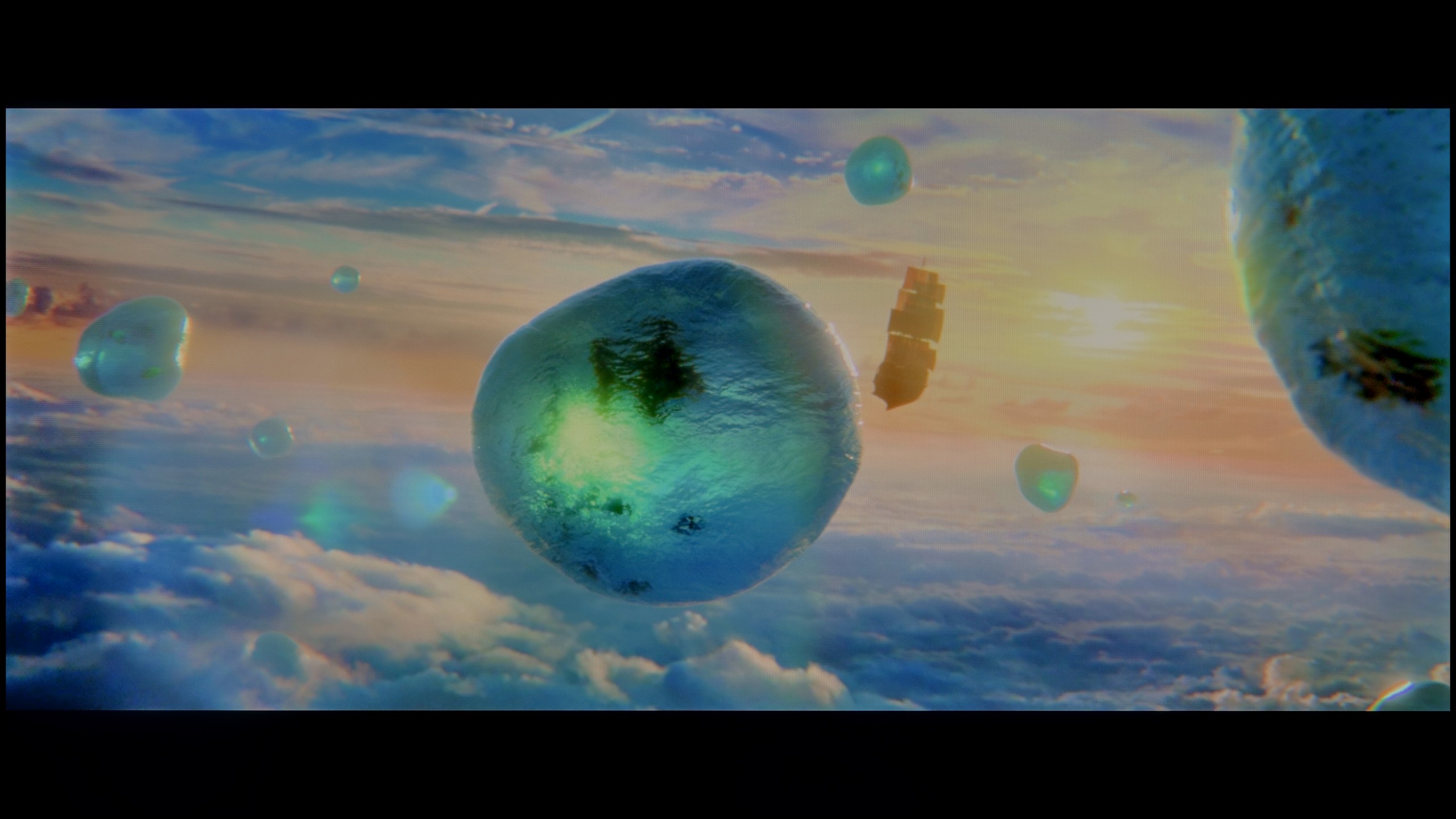
Scene from the movie “Billy Lynn” (about 1100 nits)


Static HDR10


Dynamic: HDR10+
Dynamic: Dolby Vision


HDR luminance chart:
Hisense U7Q
Luminancja HDR
Luminance of RGB colors
Samsung QLED Q80D
Luminancja HDR
Luminance of RGB colors
In the context of HDR, the Samsung Q80D television achieves very positive brightness results in the tested film scenes, where the frame is filled with light, reaching values from 600 to 900 nits, allowing the user to experience a great juiciness of the image. Such results allow the user to feel the difference between HDR and SDR quality. Unfortunately, problems arise in situations where small light effects occur against a dark background. In such cases (e.g. test pattern 4 from the film Sicario 2), a noticeable drop in brightness can be observed, caused by the large sizes of the dimming zones used here. This limitation, combined with the dimming algorithm, affects how the television handles small bright elements against a dark background. At that point, we may perceive an unwanted lack of brightness, and the HDR effect resembles that of SDR.
Since the algorithms responsible for blacks are performing quite well, we expected a similarly good effect regarding brightness and overall HDR quality. Unfortunately – here we have to disappoint you a bit.
The U7Q is a sufficiently bright television – under the best conditions, it can achieve around 800 nits, which indeed impresses on some scenes, especially in scenes like those from the film The Meg. Bright areas can shine, and the HDR effect is noticeable. The problem arises when there are very small, bright elements on a dark background – for example, in Sicario 2 or in the second scene from the film Life of Pi. In such moments, the dimming algorithms work too aggressively. Yes, the blacks look great then, but the brightest points can almost completely disappear, causing the HDR effect to vanish and the details to be barely visible. It's just the nature of this technology in this price segment.
As a consolation, it's worth mentioning that the U7Q is marketed as QLED (in practice, a PFS layer is used, which works very similarly), and it is indeed capable of displaying a wide colour palette – a DCI-P3 coverage of around 94% is a very good result for this class.
Factory color reproduction
6.8/10
6.3/10


Factory Mode
After calibration
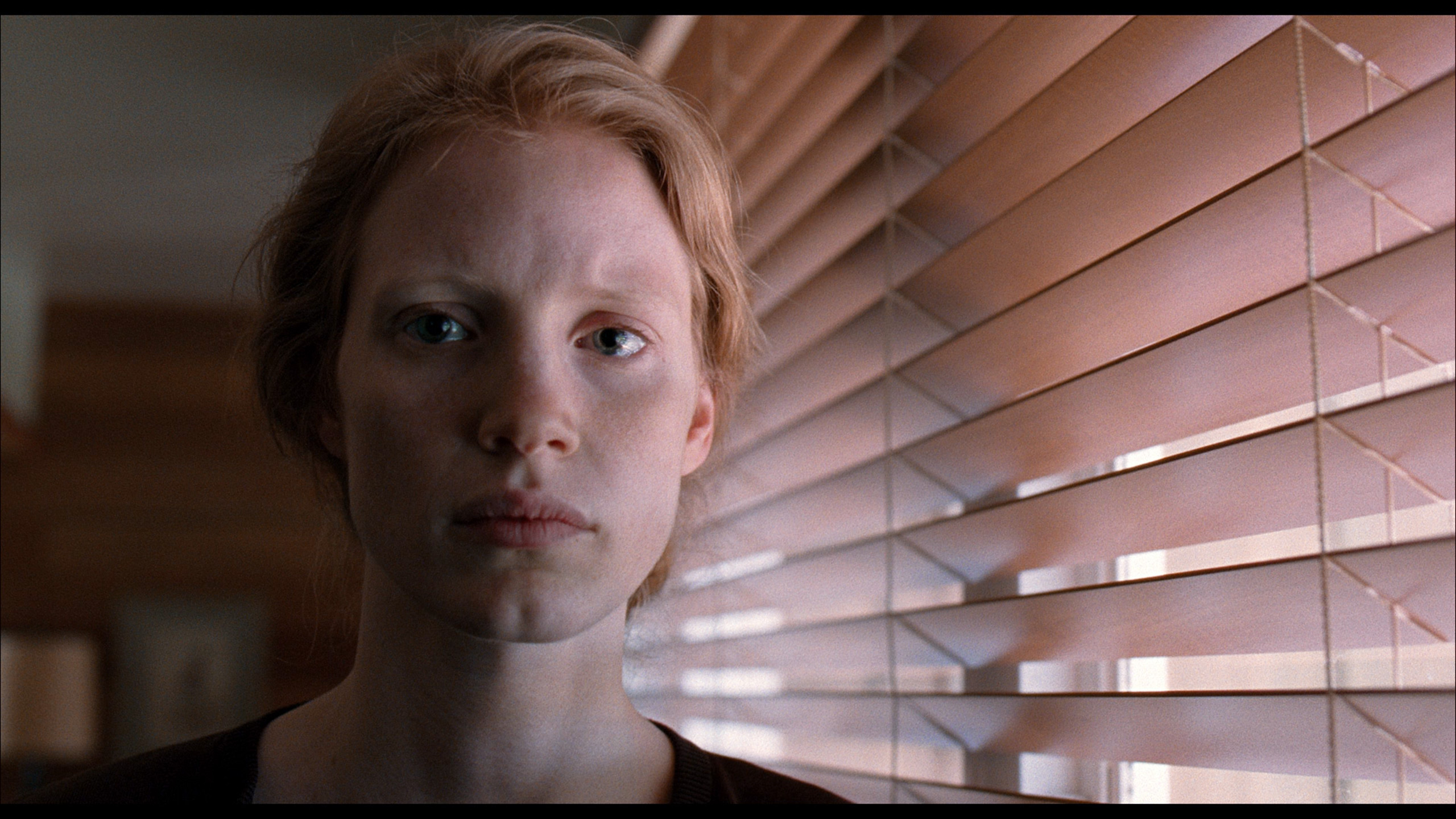
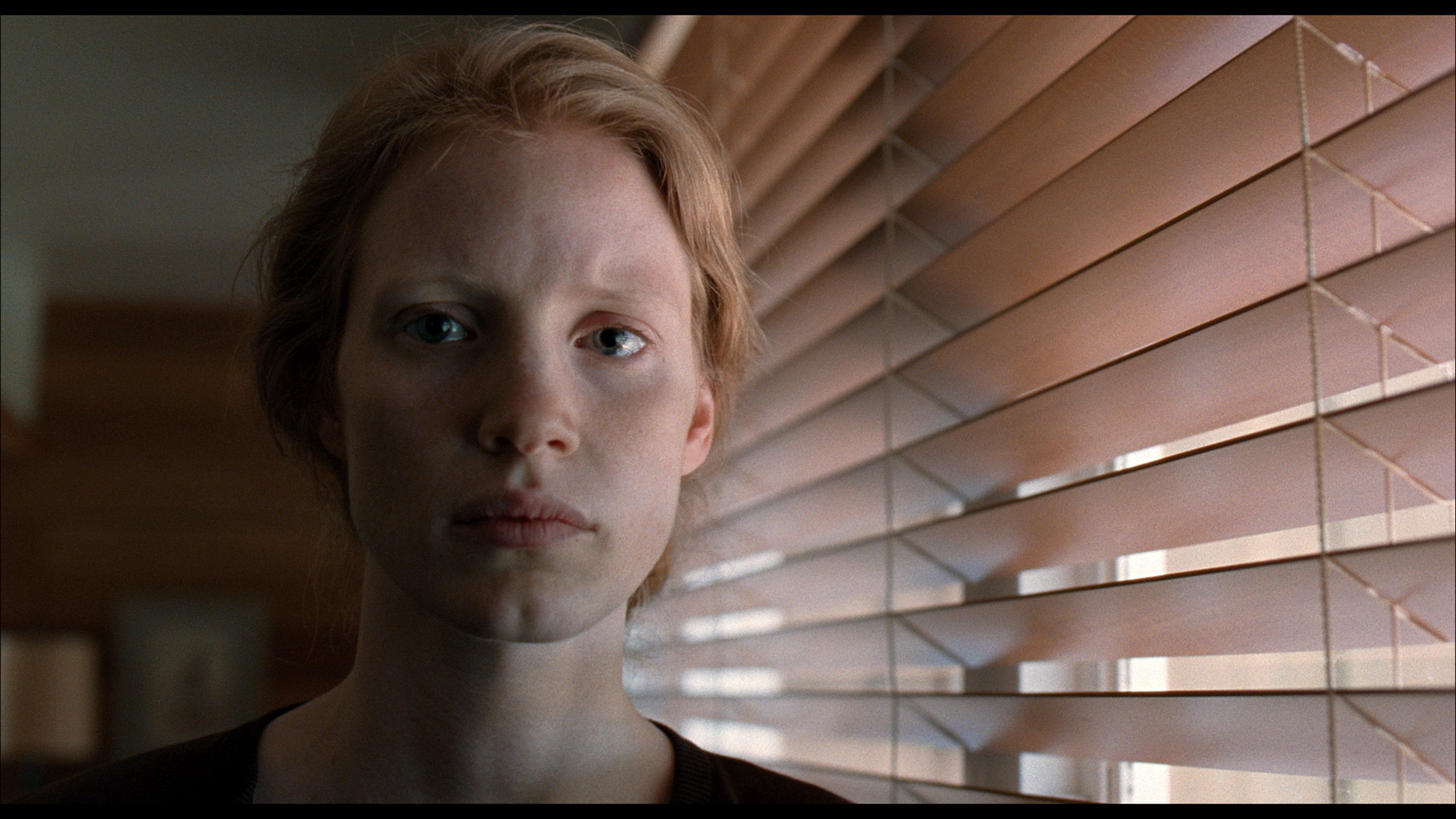
Factory Mode
After calibration
In "Filmmaker" mode, which is the best choice out of the box, the Samsung Q80D TV shows solid colour reproduction. For SDR content, a visible drop at the beginning of the gamma curve suggests that details in dark scenes may be less pronounced, impacting the overall viewing experience. Regarding white balance in SDR content, while it is generally accurate, significant drops in blue colour when screen coverage exceeds 70% can result in less natural hues in bright and dark scenes. Users may notice that some blue elements in the image may appear less intense, and the overall colour will have a warmer tint.
In contrast, for HDR content, the EOTF curve being above the reference line for most of the time indicates that the TV may struggle with accurately reproducing brightness and details in the brighter areas of the image, which may be disadvantageous for the viewer. It is also worth noting the substantial drop at the beginning of this graph, indicating that the TV has difficulties reproducing brightness in the darker areas of the image, as seen in the contrast and black tests, where several scenes were unable to showcase the full capabilities of the TV's brightness. In terms of its white balance, the initially good results on the graph are promising, but the sharp drop in red colour, which significantly falls down, combined with a large increase in blue colour, may lead to inaccuracies in reproducing certain skin tones and other key colours. This phenomenon may be noticeable to viewers in scenes where colour details are crucial.
We tested the U7Q in the best possible picture mode, which is Filmmaker Mode. This is the mode that is supposed to provide the most "filmic" and creator-intended experience – right out of the box. Unfortunately… even this professionally sounding name does not guarantee a perfect picture.
In our unit, the problem lay in the incorrectly set white balance. Both in HD and 4K content, the picture had too much blue and red, which caused the screen to take on a slightly rosy tint. It didn't look terrible, but it was noticeable – especially in bright scenes and white backgrounds. This alone could perhaps be forgiven, but the biggest problem is managing brightness in HDR content. The EOTF curve from measurements confirms what we saw earlier during scene tests: the television can overly darken the smallest bright elements, causing them to nearly disappear, or on the contrary – excessively brighten the brightest ones, which affects the naturalness of the picture.
Color reproduction after calibration
8.1/10
7.4/10

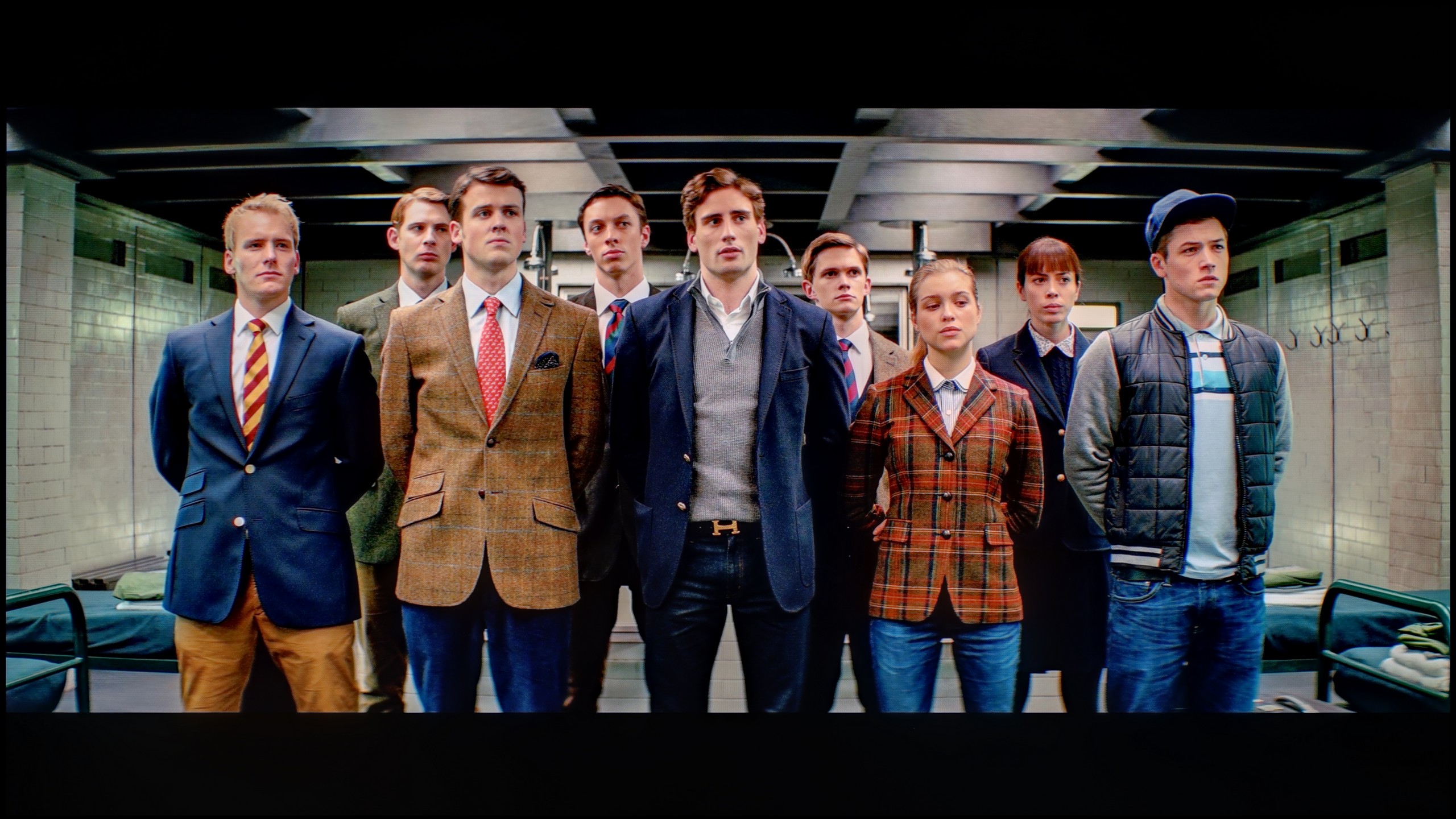

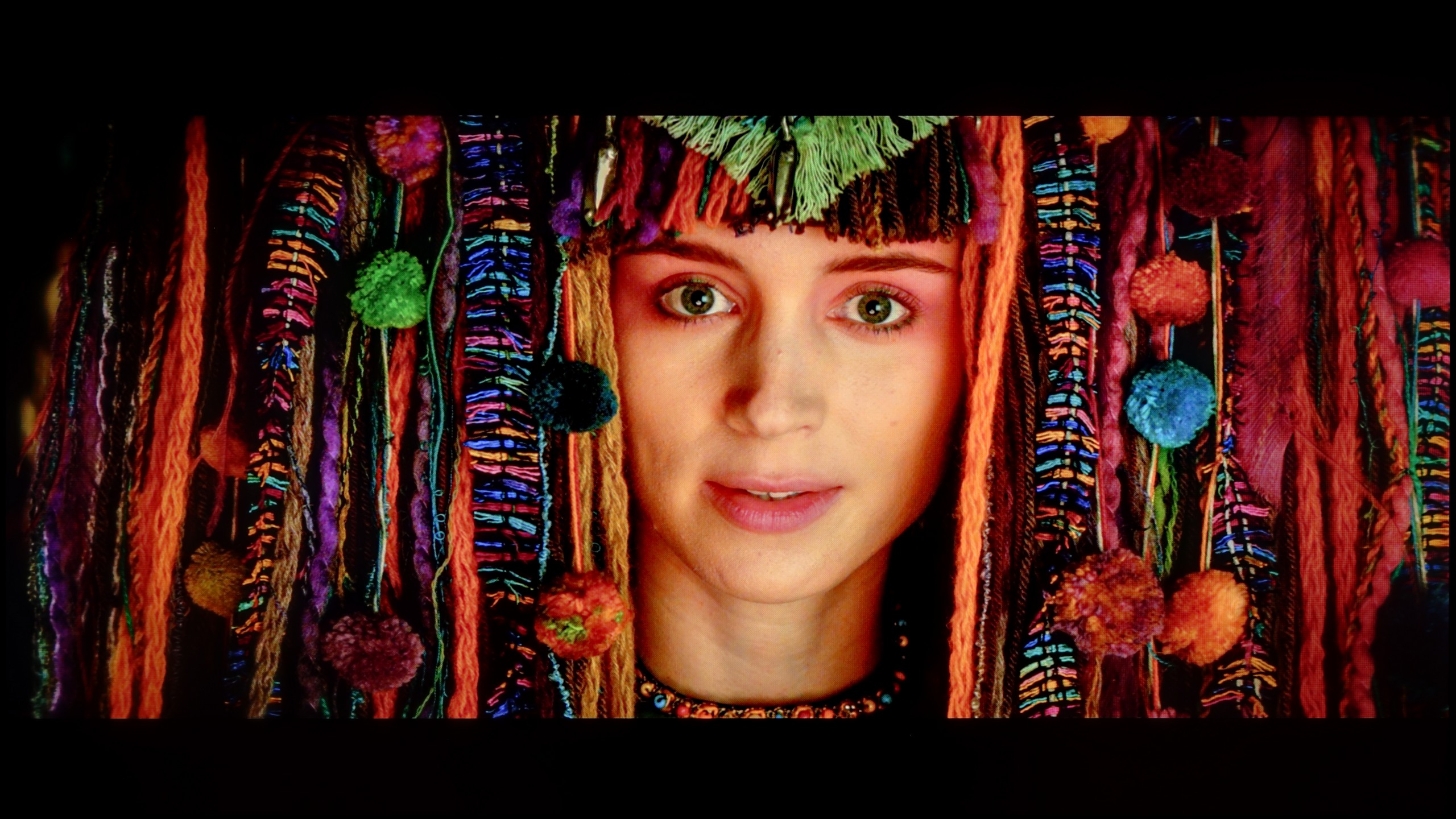
The film mode after calibration looks significantly better than the one you can see when taken out of the box. Samsung offers an advanced range of calibration tools in its televisions. Among them are 2- and 20-point greyscale adjustment and CMS (Colour Management System). Both in HDR and SDR mode, the white balance has improved significantly, although there are minor errors at the end of the graph in the case of HDR content. The contrast has also been greatly improved, and the gamma curve responsible for SDR shows better results. However, when it comes to HDR, the EOTF curve in the television seems to be at an ideal level at first glance. Yet, when we delve deeper and enable the EOTF graph while watching films, we may notice that all the lines of the curve are above the reference line. One could even say that the television is "cheating" when playing film materials. Such a situation, where the EOTF curve is above the reference line, makes the screen – although it may seem brighter, which some users may find attractive – lose detail in the darker parts of the image. In practice, this means that in scenes with a lot of shadows or dark elements, the television is unable to accurately render the details that should be visible.
Thanks to specialised tools, we managed to correct the colour quality in SDR content to nearly perfection. In materials with lower dynamic range, the delta E errors dropped below 0.5, which can be regarded as an almost reference result. The picture on television, YouTube, or classic Full HD looks really very good after calibration. Alright – but where did we not manage to improve the image so easily? Primarily, it concerns HDR quality content. Although we managed to somewhat 'tame' the white balance and eliminate pink tints in most scenes, unfortunately, we no longer had full control over brightness management. We set the local dimming settings according to the best observations – SDR: Medium, HDR: High – but the U7Q still did everything a bit its own way. There were still cases of excessive dimming or brightening of details that calibration simply could not eliminate. And although the overall reception of the content is significantly better, one must reckon that the U7Q will always have something to say at the end with an 'but'.
Smoothness of tonal transitions
8.8/10
9.9/10

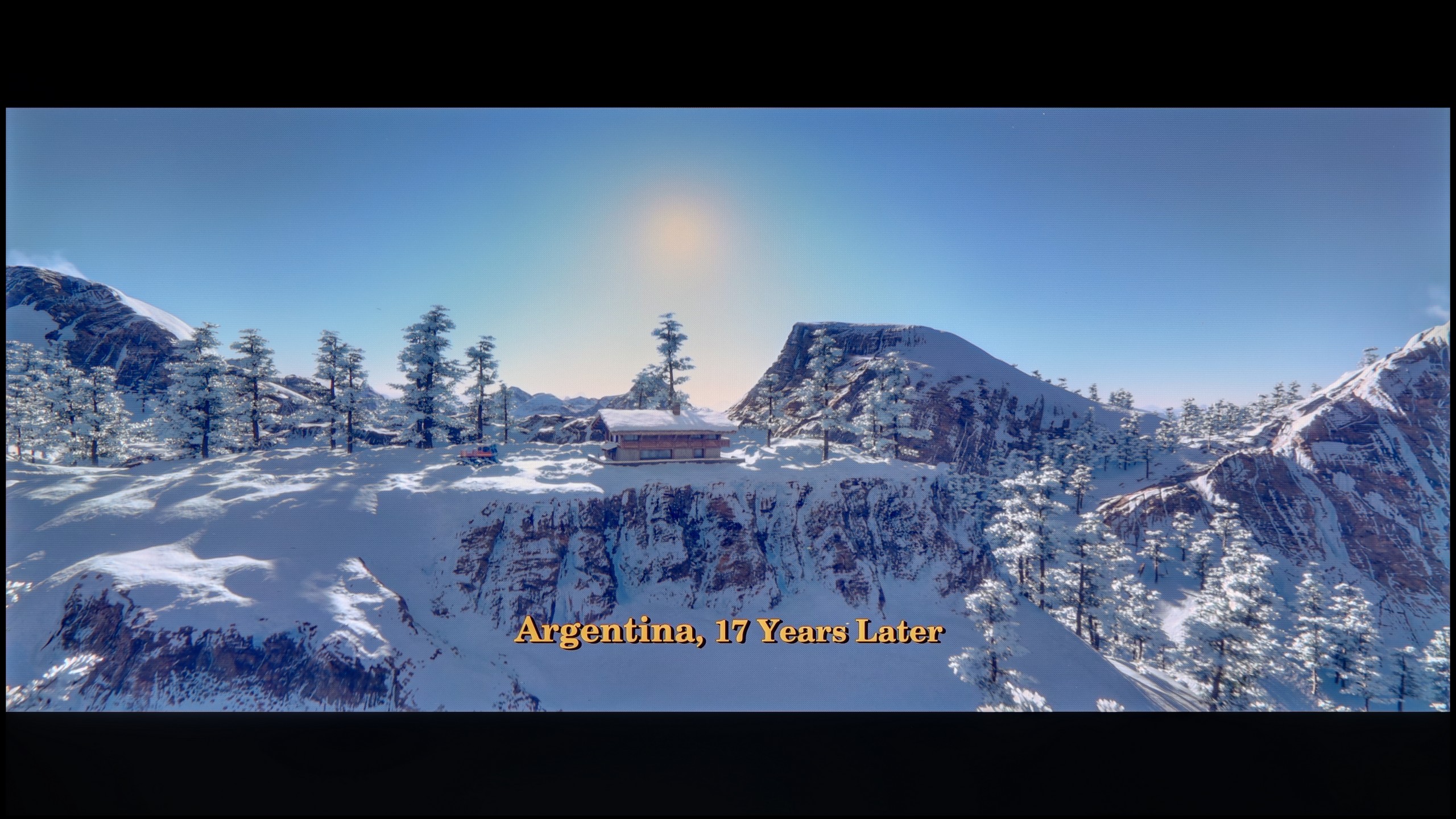



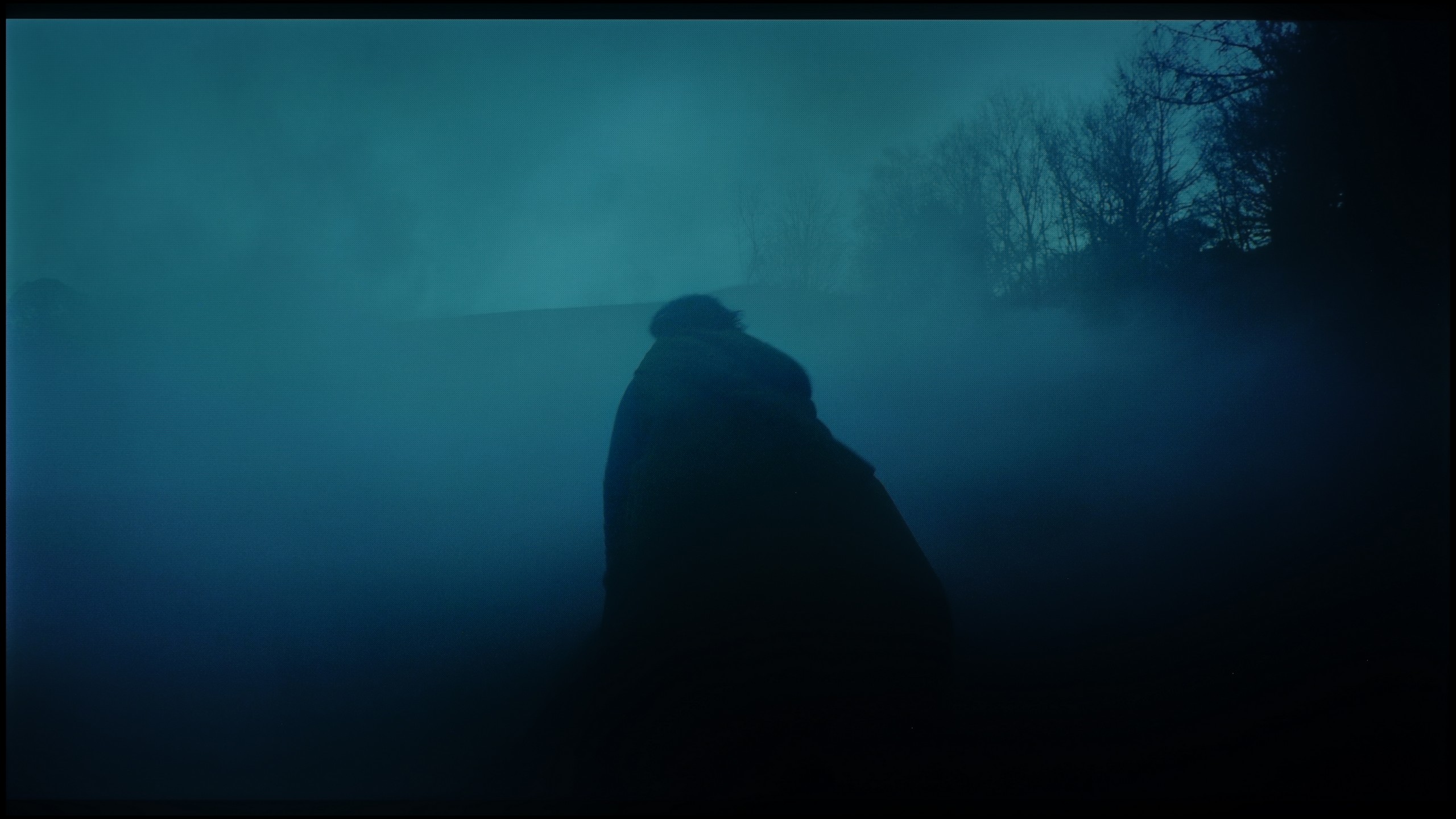






The tonal gradation in the Samsung Q80D television is at an excellent level and can be considered one of its stronger points. Even in the most demanding scenes from the films we tested, it performs exceptionally well. Any potential issues with smoothing transitions in colours are minimal and subtle. The average viewer will most likely not notice them, which translates to an overall positive visual experience in everyday use.
The U7Q performs remarkably well when it comes to tonal transitions – we can confidently say that it is at an almost reference level, which is why this television receives one of the highest possible ratings in this category from us. Colour blending is smooth, clean, and without visible bands. In the majority of scenes, everything looks simply perfect, and any minor imperfections may only appear in very specific shots – although we hardly noticed any during our tests.
Image scaling and smoothness of tonal transitions
7/10
6/10
Smooth transition function

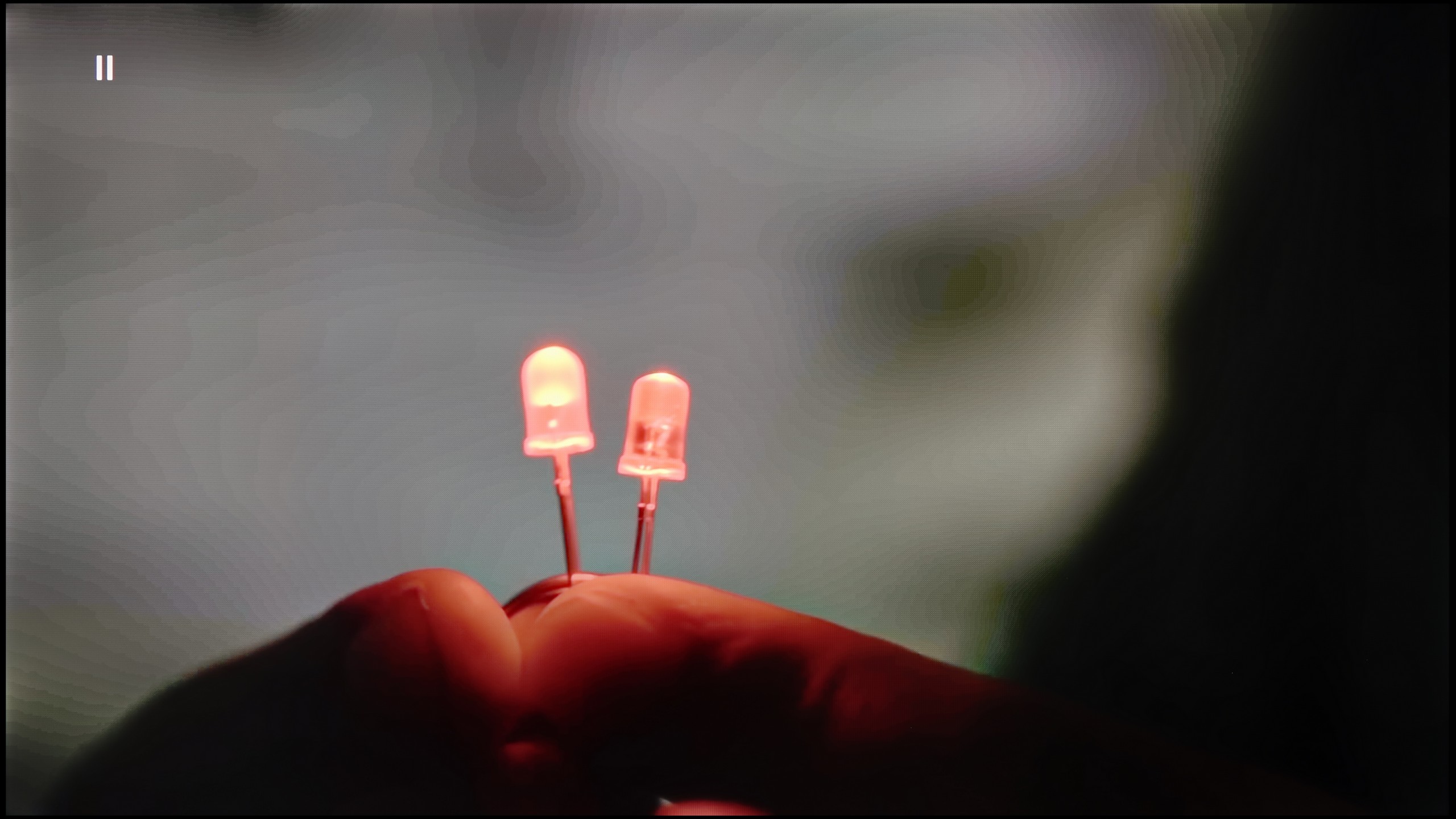
Image without overscan on the SD signal


Samsung Q80D performs very well with low-quality materials. The noise reduction works on the principle of gentle grading, making it very effective in smoothing out unwanted image disturbances. Unfortunately, this same effectiveness also causes elements that should not be smoothed, such as film grain, to become blurred. For those who value a pliable, smoothed image more, this can be seen as a significant advantage, especially for lower-quality content.
When it comes to image scaling, Samsung Q80D stands out positively in this aspect, significantly enhancing viewing comfort. The television handles the conversion of lower-resolution materials well, improving their quality and detail. For example, in the attached image with the model, there are no visible artifacts or excessive fraying of branches, which attests to the advanced image processing technology.
There are situations where we would like to smooth out tonal transitions a bit, especially in older materials – those with limited source quality. The U7Q is equipped with a feature called "Smooth and Gradient Image," but unfortunately... it works very poorly. In the "Low" option, the effects are practically unnoticeable, and other settings smooth details but do not improve tonal transitions. The only positive aspect is that the feature does not interfere with film grain, so it does not ruin the natural structure of the image.
Fortunately, upscaling content performs quite well. The image is not excessively sharpened, and there is no artificial clarity – and although it is known that this is not the level of high-end televisions, the U7Q handles displaying really old content in a completely acceptable manner without any issues.
Blur and motion smoothness
7.3/10
7.5/10


Blur (native resolution, maximum refresh rate):




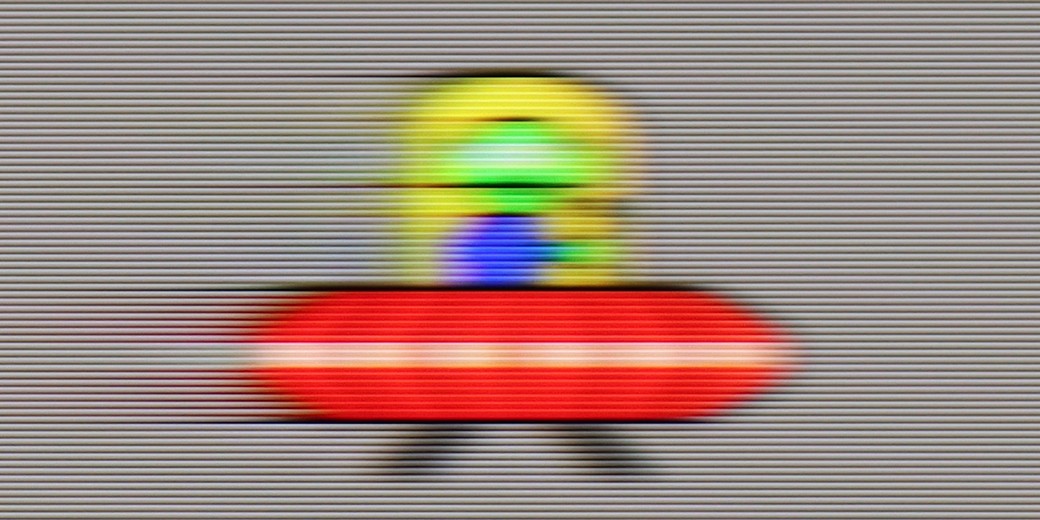
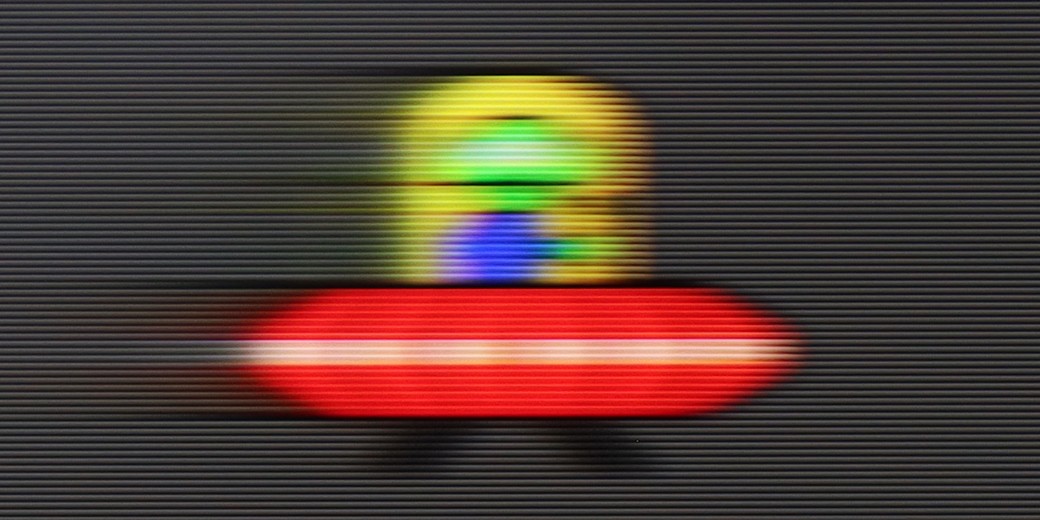
Blur (BFI function enabled):
Image flickers in this mode





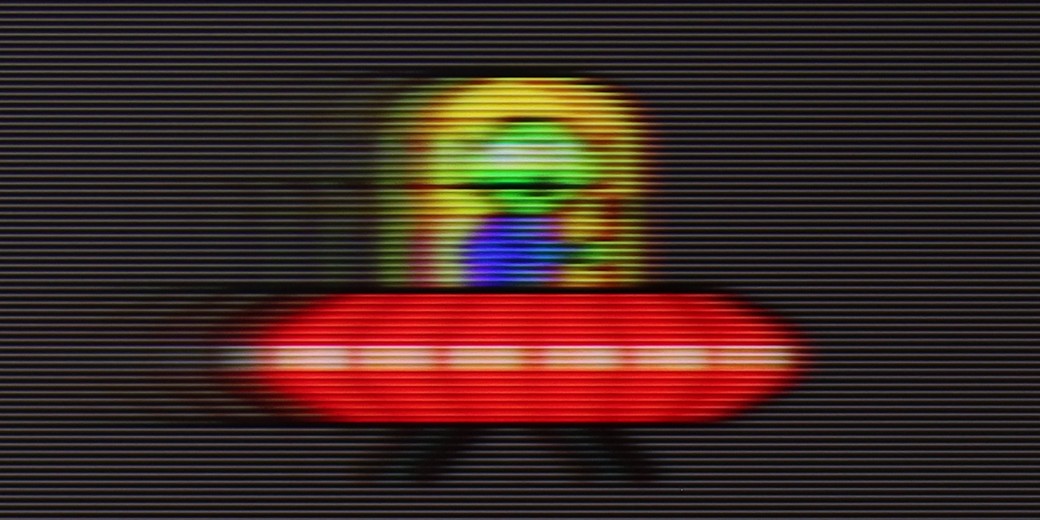
Smużenie ():
Smużenie (1080p 240Hz):
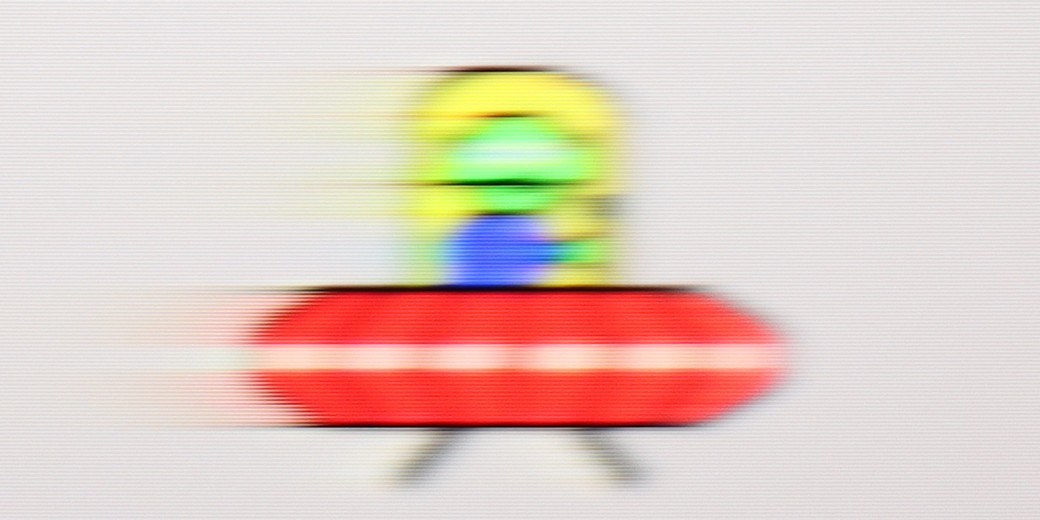
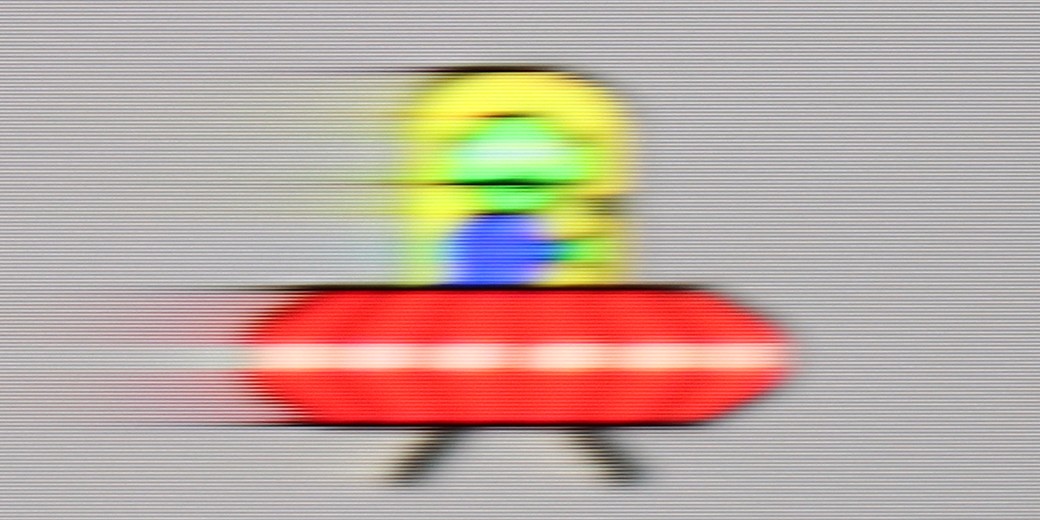
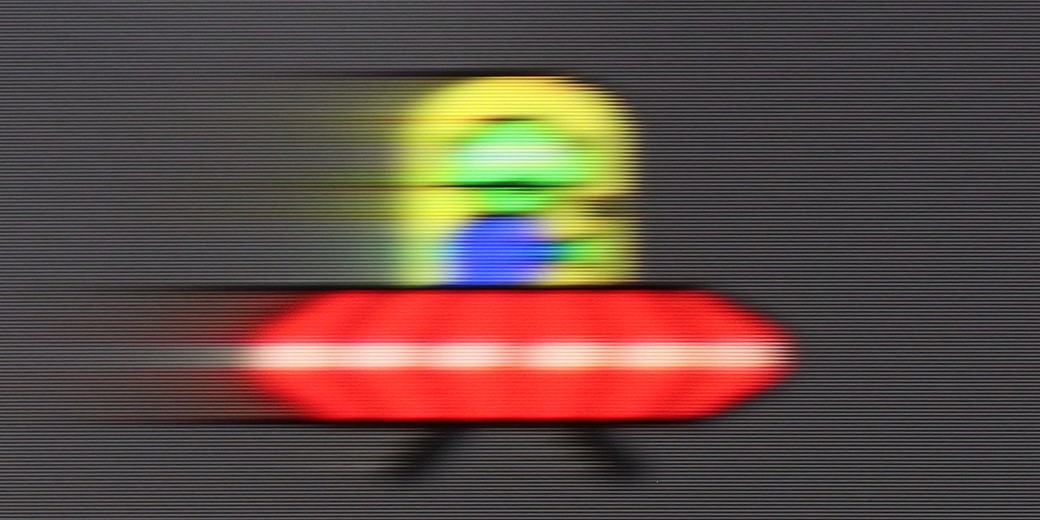
The Samsung Q80D television stands out very positively in terms of motion fluidity and motion blur reduction, primarily due to the applied 120Hz panel and above-average response time of the panel. Users have two options for adjusting fluidity: "Motion Smoothing," which allows for adjustment of smoothness on a 10-point scale, and "Blur Reduction," particularly effective at higher refresh rates, improving the sharpness of rapidly moving objects. In the UFO test, no motion blur is visible behind the moving object, and the image is not cloned forward, indicating a lack of overshoot effect.
U7Q is indeed a very fast television, just like its more powerful version "PRO". At a resolution of 4K, it supports up to 144 Hz refresh rate, and if someone wants even more – in Full HD, you can achieve up to 240 Hz! This will mainly benefit PC gamers, but it is worth appreciating – it is a rarely seen feature in this price segment. Right from the start, it is clear that the U7Q has been designed with dynamic content in mind, such as games or sport. In films, we are not left "out in the cold" either – the U7Q offers an "Ultra Motion Smoothness" feature, where using two sliders you can adjust whether you prefer a smoother, theatrical image or something closer to a cinematic style with a visible film frame. It is good that, as with most manufacturers, we have a choice here as well and can adjust it to our own preferences.
Console compatibility and gaming features
9.5/10
8.5/10
- ALLM
- VRR
- VRR range48 - 120Hz48 - 240Hz
- Dolby Vision Game Mode
- Correct implementation of HGIG
- 1080p@120Hz
- 1440p@120Hz
- 4K@120Hz
- Game bar



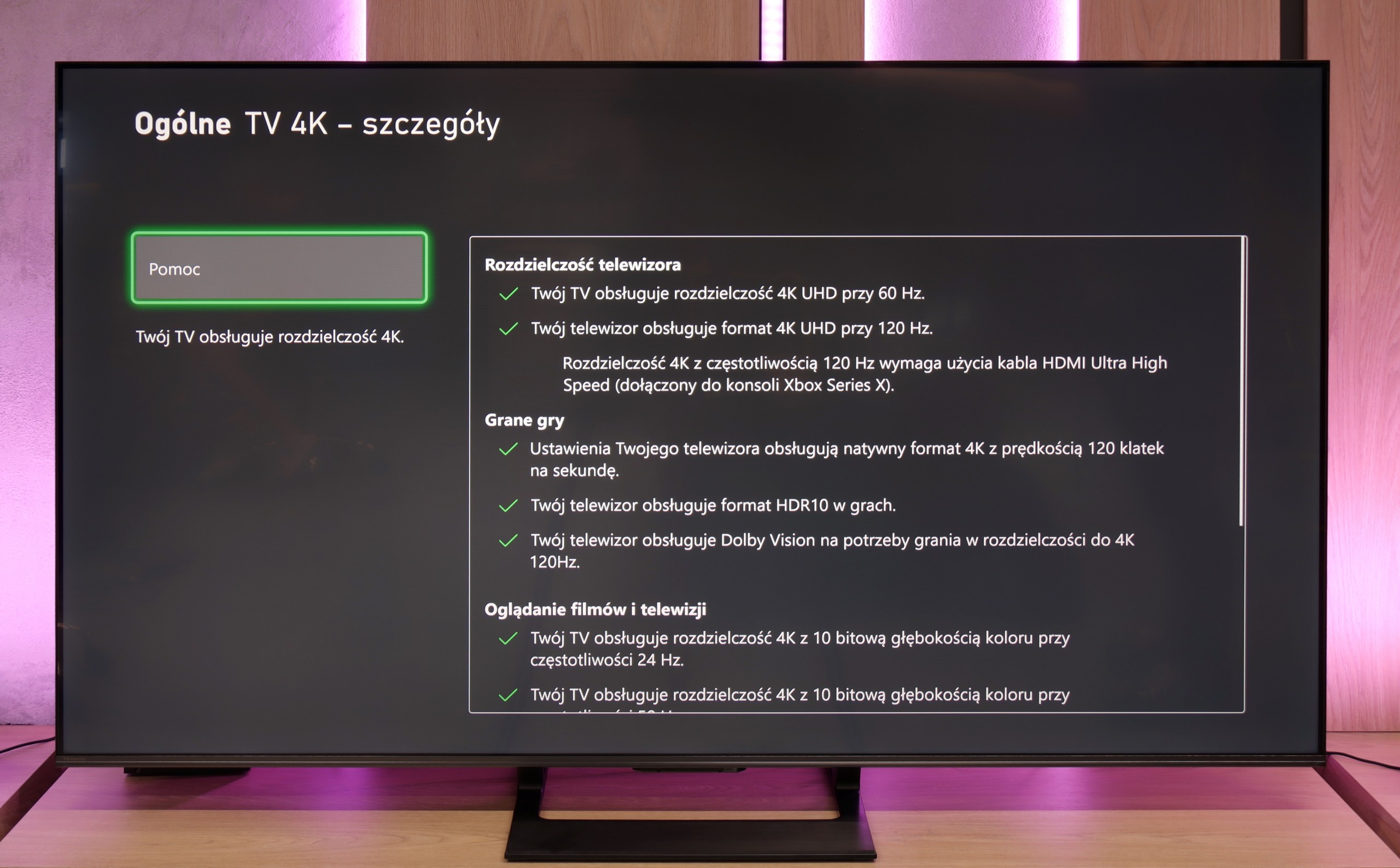



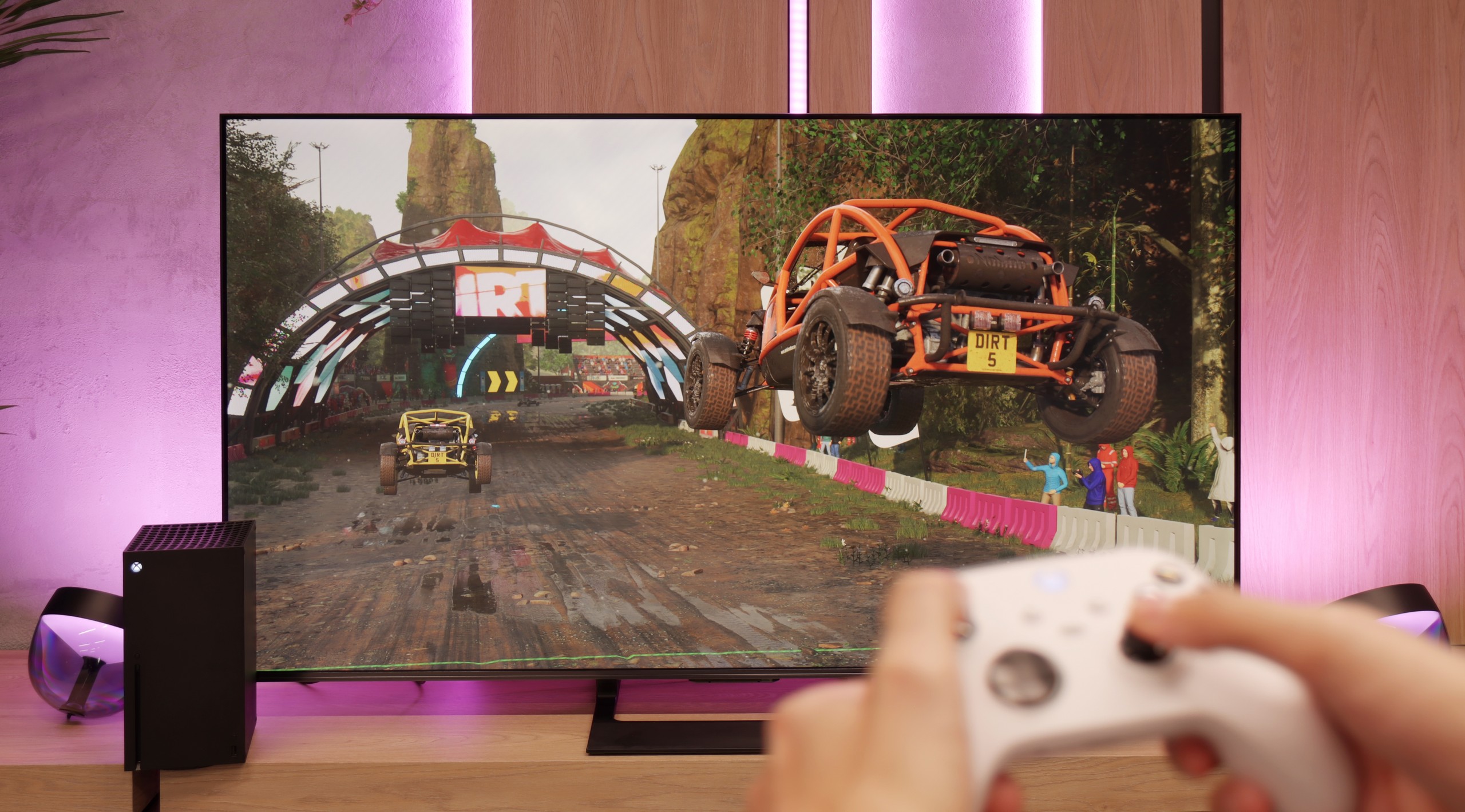
The Samsung Q80D television is a true gem for gamers. It is equipped with four HDMI 2.1 ports, which is a rarity, especially in this price range. This allows users to enjoy features such as ALLM (Auto Low Latency Mode), VRR (Variable Refresh Rate), and 120Hz in 4K resolution. These features ensure smoothness and responsiveness of the image, which is a key aspect during dynamic gameplay. The television also supports HGIG (HDR Gaming Interest Group), enabling optimal display of HDR content in games. Additionally, it is equipped with a Game Bar that allows quick access to gaming settings. Users of Nvidia graphics cards will also be pleased thanks to the implementation of G-Sync. This feature eliminates stuttering and screen tearing. The only downside is the lack of support for Dolby Vision mode, which may be disappointing for users looking for this HDR format. It is also worth mentioning that since 2022, thanks to a partnership with Microsoft, Samsung televisions offer the Xbox Game Pass application, allowing for cloud gaming. This is an additional advantage for gamers who want to access a wide library of games without the need for a console.
The Hisense U7Q is a television designed with gamers in mind – and this is immediately evident from its gaming capabilities. It has practically everything you could wish for: variable refresh rate (VRR) – check, automatic game mode (ALLM) – check, and on top of that, high refresh rates of up to 240 Hz in Full HD and support for various resolutions, not just 4K. This is truly a great set of features that makes the U7Q perform well both in fast-paced first-person shooters on consoles and in more demanding titles on PC. Of course – as with most Hisense models – there is a lack of proper implementation of the HGiG feature. It's a shame because HGiG allows console brightness to be matched to a specific television, which in practice makes displaying HDR games according to the creators' intent much easier. Without this, you simply have to reckon with certain limitations in the final HDR image in games.
Input lag
9.8/10
9.7/10
SDR
HDR
Dolby Vision
There isn't much to say here, the input lag at this level is simply remarkable. It's hard to achieve a better result that will satisfy gamers! The television performed excellently at every tested resolution and refresh rate, both in SDR and HDR.
The input lag on the U7Q is really impressive. With 120 Hz content, we measured around 9 ms, and with 60 Hz – around 17 ms. These are exceptional results that make the television excellent for even dynamic games requiring quick reactions. It's hard to criticise anything here. Of course, as is often the case, the Dolby Vision mode in games seems to be a bit slower compared to classic SDR or HDR. This will be particularly noticeable for users of Xbox Series X/S consoles, which are the only ones supporting Dolby Vision Gaming. Fortunately, the input lag remains below 30 ms, so in practice, this is still an acceptable level even for more demanding gamers.
Compatibility with PC
7.6/10
8.6/10

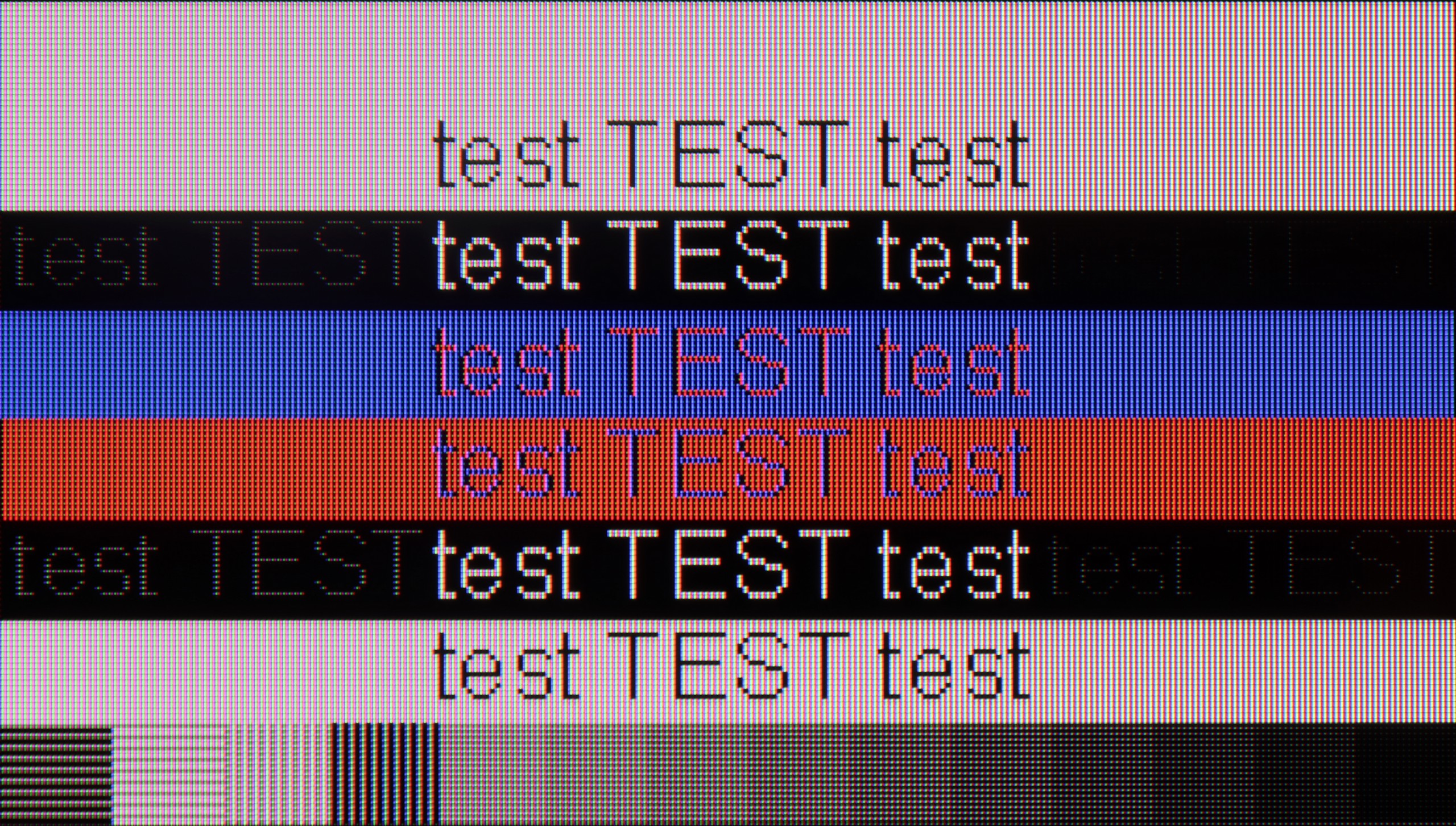
Samsung Q80D works well as a computer monitor. Thanks to support for 4:4:4 chroma (which only functions in "Game" mode), text on the screen is clear and legible, which is very important for those who want to work on such a television with text documents or spreadsheets. One of the biggest advantages of this model is its exceptionally low input lag in "PC" mode, which is just 9 ms. This is a reference-level result that ensures smoothness and responsiveness, which is crucial for both gamers and those involved in video editing. The only issue we can point out is that there is a certain problem with displaying fonts on dark backgrounds. When we zoom in on the tested font image, we notice that the horizontal lines are darker compared to the vertical ones. This means that the sub-pixels in the television do not fully illuminate in this case. This could be due to an oversight by the manufacturer regarding the optimisation of the algorithm responsible for displaying thin lines, which affects the quality of details in displaying text on dark backgrounds. Nevertheless, Samsung Q80D is a very good choice as a PC monitor.
The U7Q communicates excellently with the computer. For gamers, this is great news – we have high refresh rates, low input lag, and G-SYNC support, making gameplay from a PC pure enjoyment. But the U7Q also performs well in everyday tasks. If someone uses the computer for word processing, browsing the internet, or office work – there’s nothing to complain about. The TV correctly handles chroma 4:4:4, so fonts look sharp and clear, without blurriness or odd contours. Both small and capital letters are simply readable – just as it should be.
Viewing angles
3/10
3/10
Samsung Q80D, equipped with a VA panel, unfortunately does not perform well in terms of viewing angles. When we watch the screen at a 45-degree angle, there is a noticeable loss of brightness. The image becomes less sharp, which can be problematic if we plan to watch television from different spots in the room. However, the VA panel has its advantages. When looking directly at the screen, black levels are deep and well-saturated. Furthermore, even at an angle, dark colours maintain their depth, which is a rarity for this type of panel.
The viewing angles on the U7Q are rather poor – this is simply characteristic of VA panel qualities. Directly in front, everything looks very good: blacks are deep, colours are saturated, and contrast is high. However, just moving slightly to the side causes the picture to start losing quality – colours become washed out, and blacks begin to resemble dark grey. Compared to televisions with IPS panels, the U7Q performs worse, although on the other hand, it makes up for it with better contrast and deeper blacks.
TV efficiency during daytime
6/10
6.2/10

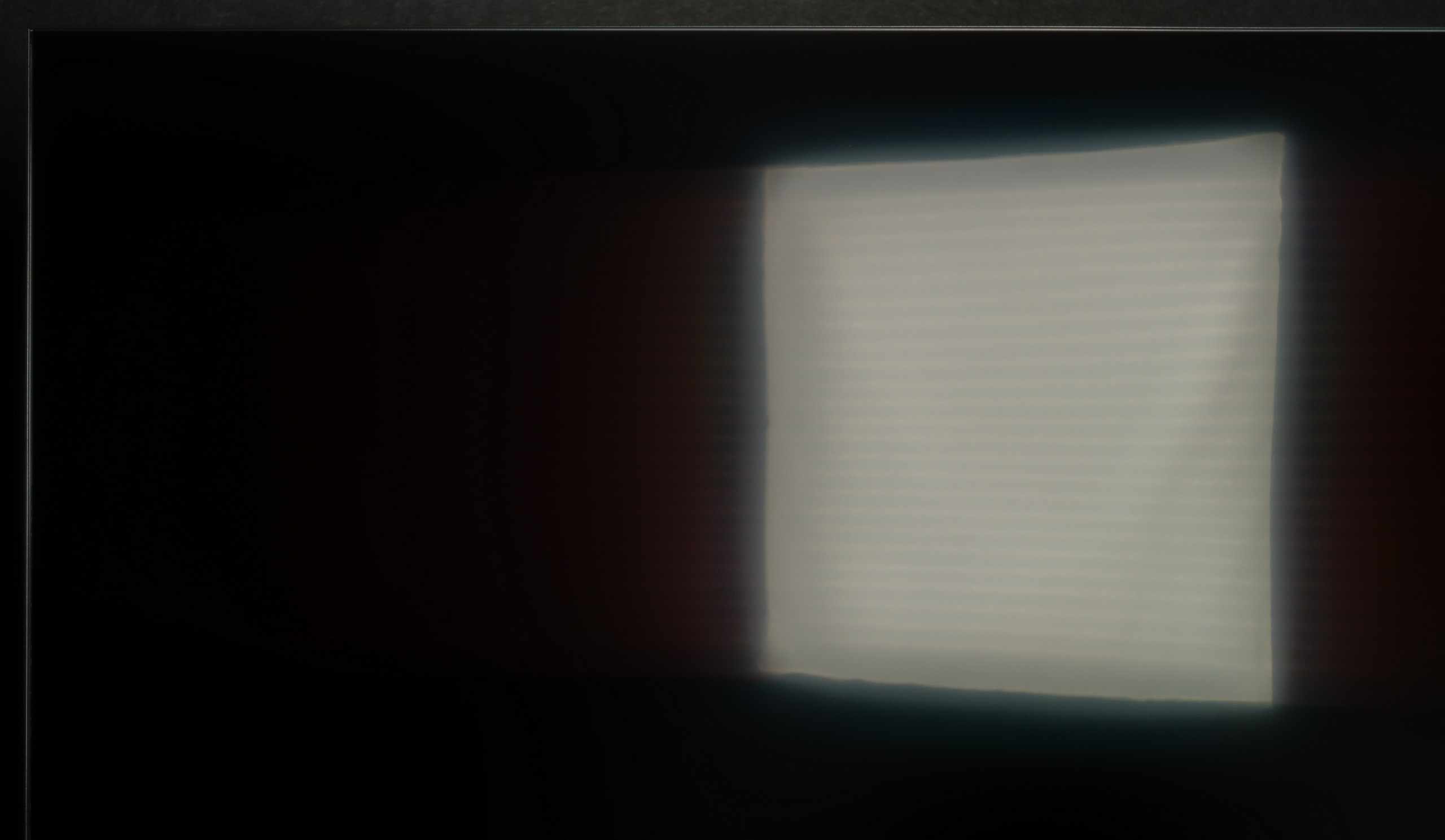

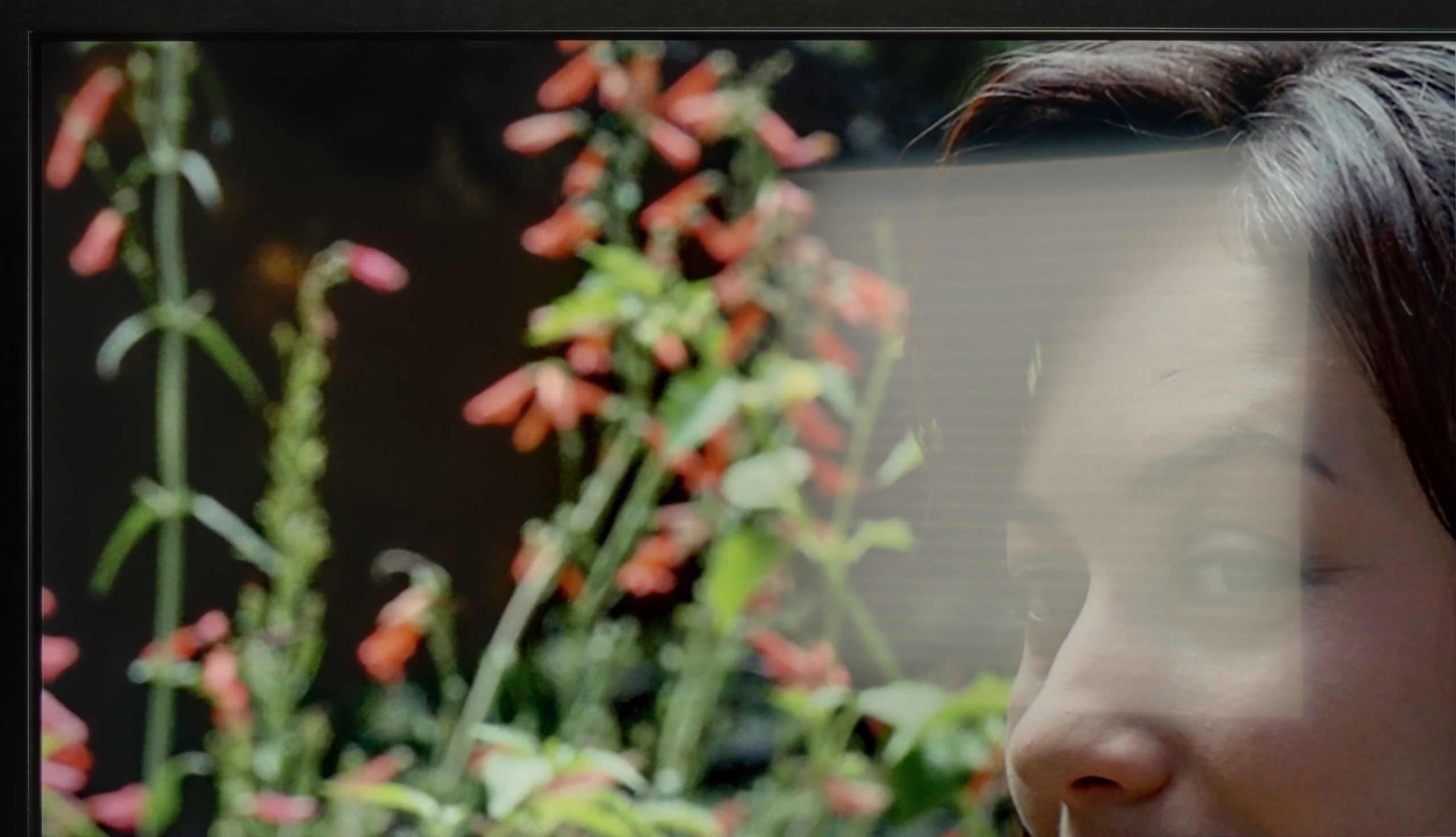
Matrix brightness
Average luminance SDR
Hisense U7Q: 519 cd/m2
Samsung QLED Q80D: 550 cd/m2
The Samsung Q80D television stands out with very good brightness, averaging 550 nits, which is an impressive result, especially since it maintains this brightness across the entire screen surface. This makes the image clear and well-visible even in bright rooms, which is a big plus when watching television during the day. However, despite the satin coating of the panel, the television struggles somewhat with reducing reflections. In bright lighting conditions, unwanted glares can appear, which may disrupt viewing comfort. This is particularly noticeable when there are light sources in the room directly falling on the screen.
The U7Q performs quite well in a sunlit room. The brightness in SDR mode averages around 520 nits, which practically means that even on a sunny day, it is easy to comfortably watch television – without the feeling that everything is drowned in reflections. Additionally, thanks to the satin coating on the panel, the television does a good job of suppressing reflections.
Details about the matrix
Subpixel Structure:

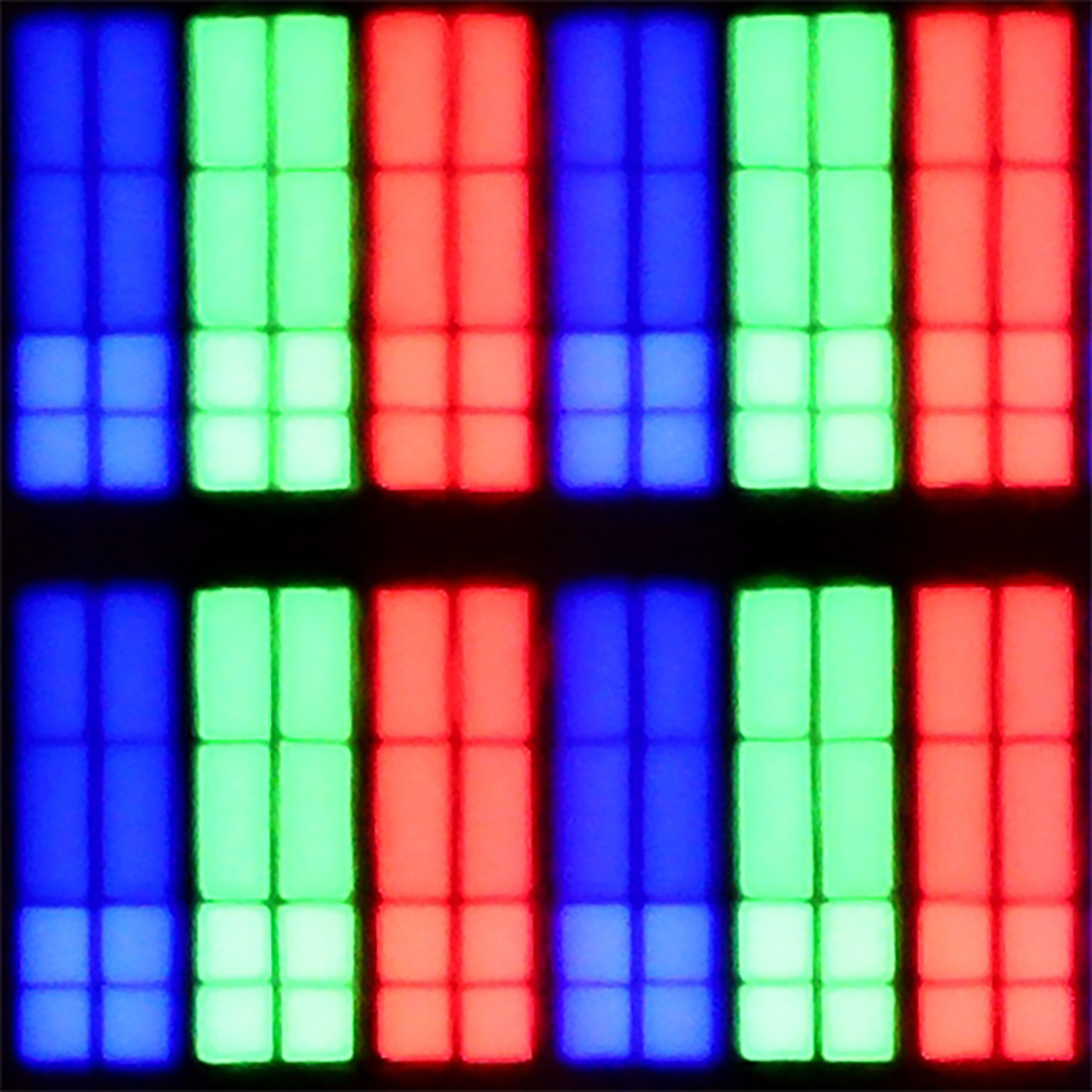
Panel uniformity:

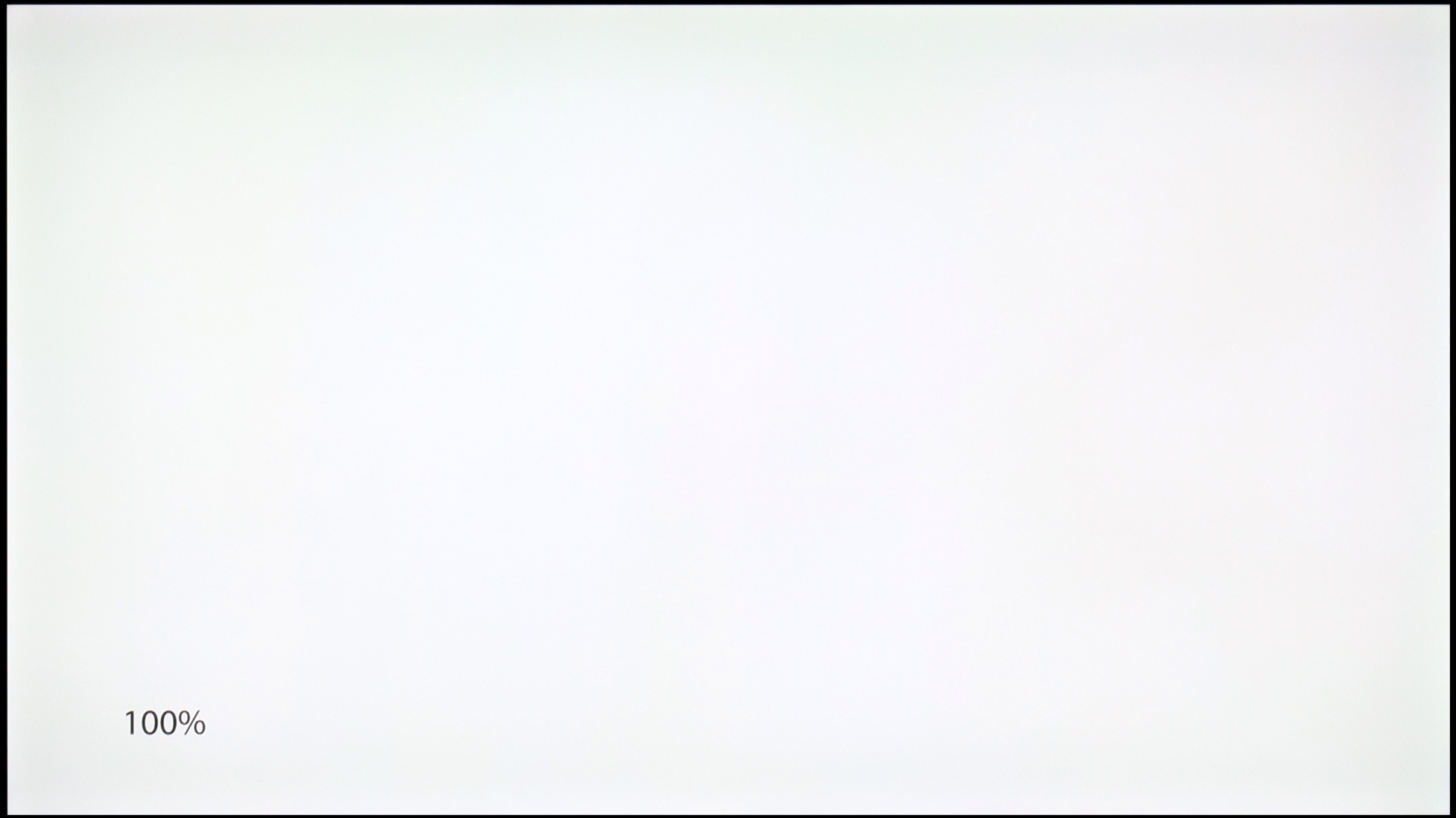
Samsung QLED Q80D
Hisense U7Q
TV features
7.7/10
8.9/10
- HDMI inputs0 x HDMI 2.0, 4 x HDMI 2.1 48Gbps2 x HDMI 2.0, 2 x HDMI 2.1 48Gbps
- Other inputsRCA (Chinch)
- OutputsToslink (Optical audio), eARC (HDMI), ARC (HDMI)Toslink (Optical audio), eARC (HDMI), ARC (HDMI), Mini-Jack (Headphones)
- Network InterfacesWi-Fi 2.4GHz, Wi-Fi 5GHz, Ethernet (LAN) 100MbpsWi-Fi 2.4GHz, Wi-Fi 5GHz, Ethernet (LAN) 100Mbps
- TV receptionDVB-T, DVB-T2, DVB-S, DVB-S2, DVB-CDVB-T, DVB-T2, DVB-S, DVB-S2
Classic features:
- Recording to USB (terrestrial TV)
- Recording programming
- Picture in Picture (PiP)
- RF remote control (no need to aim at the screen)
- Backlit remote control
- Teletext
- Audio only mode
- Possibility to connect Bluetooth headphones to the TV
- Possibility to simultaneously use Bluetooth headphones and the TV speaker
Smart features:
- AirPlay
- Screen mirroring (Windows Miracast)
- Wyszukiwanie głosowe
- Voice search in native language
- Ability to connect a keyboard and mouse


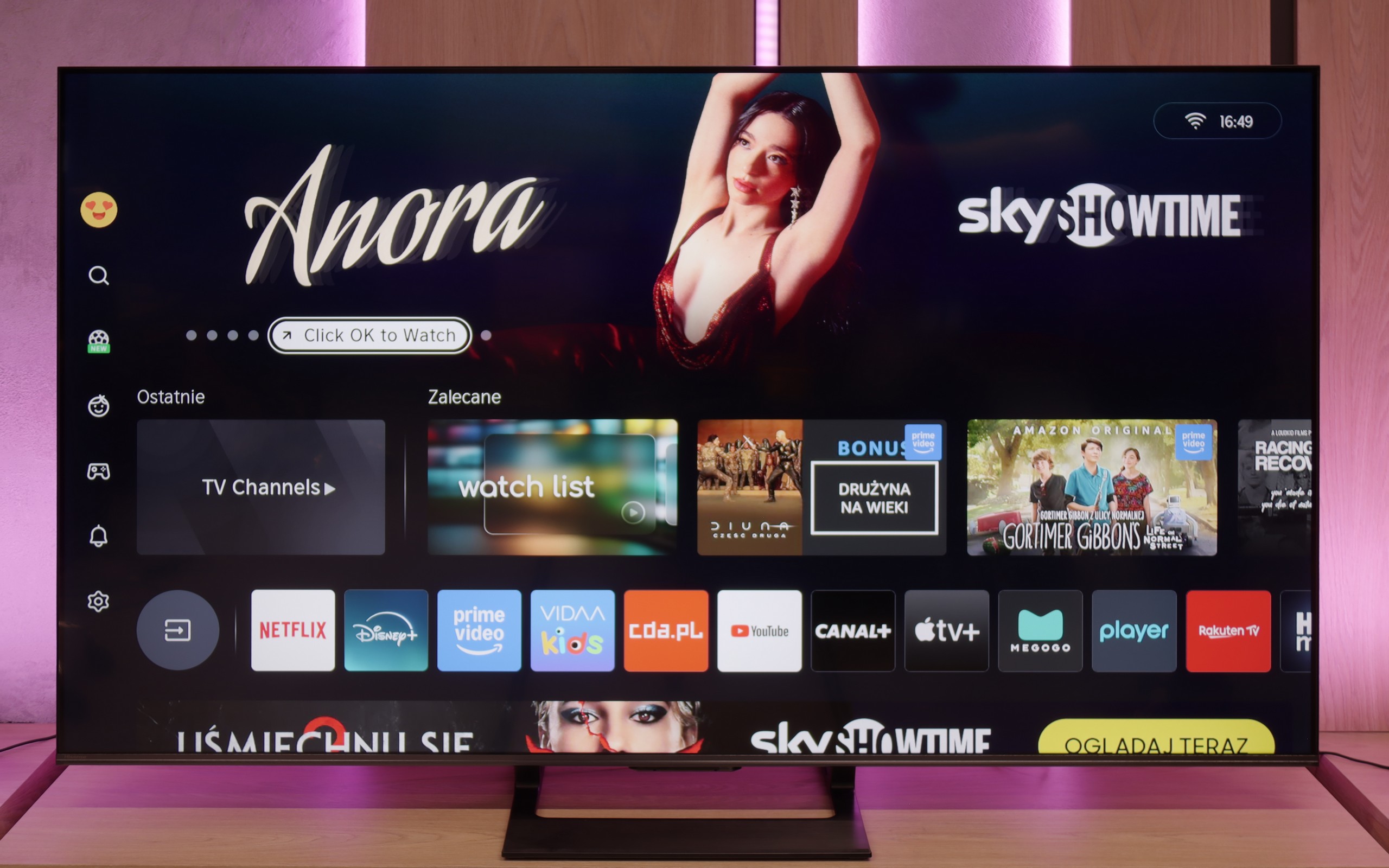

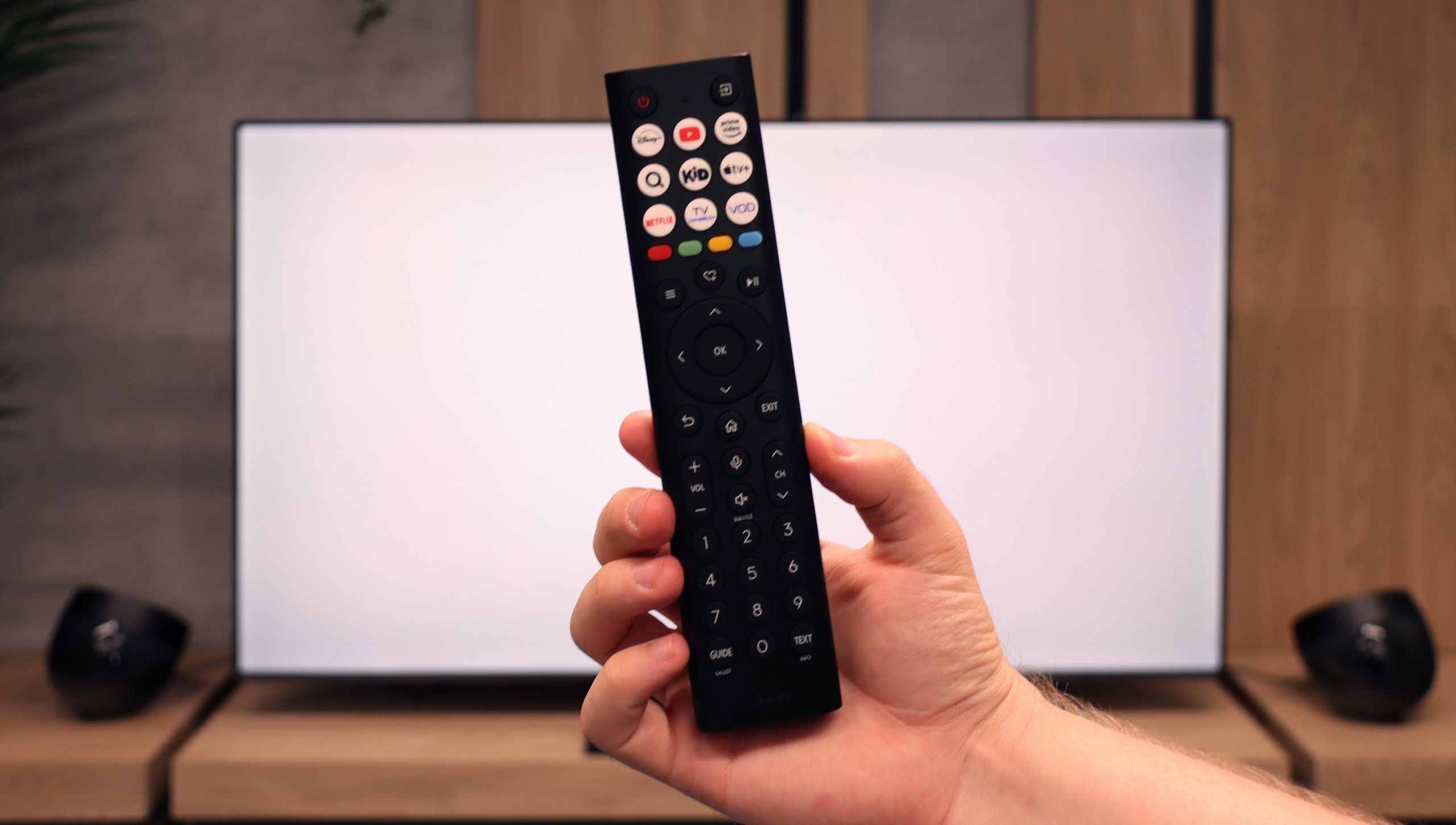
The Samsung Q80D television offers a range of features that significantly enhance user comfort. The Tizen system is an advanced platform that provides users with an intuitive and smooth experience. Thanks to its user-friendly interface, navigation through apps and settings is quick and easy. Tizen supports a rich set of applications, including popular streaming services, allowing access to a wide variety of entertainment content without the need for additional devices, with the novelty for 2024 being support for the Polish language. It is also worth mentioning the solar remote, which is not only eco-friendly but also convenient for everyday use. The solar cell remote can easily control other devices such as home cinemas, decoders (e.g. Canal+), or game consoles, which poses quite a challenge for other manufacturers. Returning to the console, Samsung Q80D offers several features that may appeal to gamers. Above all, the television supports VRR (Variable Refresh Rate) technology, which allows for smoother game displays, eliminating issues like tearing and stuttering. Additionally, due to its low input lag, gaming reactions are quick and precise. The Samsung Q80D is also equipped with a Game Bar function, which allows quick access to key gaming settings without the need to exit the game. From this level, we can check and adjust parameters such as VRR, input lag, frames per second (FPS), as well as screen ratios or sound settings. This enables gamers to continuously optimise their experiences by adjusting settings to the current gameplay needs. The television supports AirPlay, allowing for easy content streaming from Apple devices, and enables connection to various Bluetooth devices, such as mice or headphones, increasing its versatility. The only downside that can be considered is the lack of support for USB recording and the fact that the Q80D unfortunately does not support the DTS audio format. This means that if we have content encoded in this format, the device will not be able to correctly playback the audio track. This could pose a problem for those using Blu-ray discs or multimedia files that often use DTS to provide high-quality surround sound. To achieve full audio experiences, it may be necessary to use an external player or soundbar that supports this format.
Classic features of U7Q
Hisense U7Q has quite a lot to offer when it comes to classic TV features. You can record programmes to USB, connect external devices via Bluetooth without any hassle, and the interface – such as the EPG – is clear and easy to read. It may sound like something mainly appreciated by seniors, but the truth is that U7Q has practically everything needed for watching traditional television. The only thing missing here is the PiP (picture-in-picture) feature.
Smart TV U7Q: Vidaa
As for Smart features, the U7Q runs on the proprietary VIDAA system. And it must be admitted – it operates really smoothly. Voice search in Polish? No complaints. AirPlay and screen mirroring? They work without any issues as well. Of course, one must be aware that VIDAA is a closed system, so – as is often the case – it lacks some popular applications, especially those related to music. Therefore, before purchasing, it is worth checking whether all the applications you use regularly are available.
Playing files from USB
9.1/10
8.2/10
Supported photo formats:
Maximum photo resolution:


The built-in player in the Samsung Q80D television is definitely one of its strong points. It handles almost all video and audio files we used in our tests exceptionally well. The only exceptions are the Dolby Vision format, which is not surprising, and less popular codecs. Additionally, it is worth noting the support for Polish characters and the ability to customise font colours. On the downside, the television performs somewhat worse with photo formats, as it only supports JPEG from the popular options, lacking support for formats like PNG or Apple HEIC.
The built-in player in the U7Q fully meets the needs of most future users. The television handles Polish characters effortlessly and supports most popular video, audio, and image formats. If we had to nitpick, it would only be about the limited support for certain image resolutions – there are instances when files from a camera are not displayed correctly. So it's worth keeping this in mind if you plan to present photos straight from a DSLR or phone.
Apps
8.7/10
7.7/10














































Sound
6.6/10
7.2/10
- Subjective sound quality:6.6/107.2/10
- Dolby Digital Plus 7.1:
- Dolby True HD 7.1:
- Dolby Atmos in Dolby Digital Plus (JOC):
- Dolby Atmos in Dolby True HD:
- DTS:X in DTS-HD MA:
- DTS-HD Master Audio:
The Samsung Q80D television is equipped with a decent audio system boasting 40W power in a 2.2 configuration, providing quite good sound experiences. This system supports all popular Dolby codecs, allowing for the use of advanced audio formats while watching films or playing games. However, it is worth noting one drawback: the television does not support DTS functionality. Nonetheless, this lack can be circumvented by connecting an external audio system, which can significantly enhance sound quality and provide a more immersive audio experience. Additionally, Samsung offers a wide portfolio of soundbars that can be integrated with the television, as well as the Q-Symphony system, which allows for the synchronisation of sound between the television and the soundbar.
Sound is one of the bigger advantages of the U7Q. The television sounds really pleasant – there is a slightly noticeable bass, good tone balance, and definitely something more than just for "daily news watching." You can easily play music on it and simply sit back and enjoy the sound – of course in an entertaining form, not an audiophile one 😉. Full support for the most important audio codecs also deserves a big plus, as they worked flawlessly. A small exception is Dolby Atmos in TrueHD version, which didn’t fully play when connected to the home cinema, so if someone uses this format – it’s worth keeping in mind – it might be a software issue.


